Active Itinerary
Join our community to use our interactive maps to plan your own itinerary and get tips and suggestions from those who have already visited.

Quick SEARCH
Your itineraries, your bookmarks, your bucketlist, already been there, your favorites, quick share, itinerary settings.
Browse your current notes. You can have notes attached to your itinerary, a specific location in your list or a specific page.
Your current itinerary settings and options.
Interactive maps are a premium feature and only available for certain account types. Free during the beta phase …
Choose your active itinerary or create a new one. Depending on your account type, you are limited to only one list. Fill your list, move or drag and drop items between them.
As a premium member, you will have private and public lists, as well as default core lists (favorites, bookmarks, already been there, bucket list).
Collection of the content you enjoyed the most. Favorites are shared publicaly. Use Bookmarks for private storage.
Share your current itinerary: With friends and family via email, to Twitter, to Facebook or pin it on Pinterest.
Decide, if the active itinerary is public or private.
Your bucketlist, go ahead and add some POIs!
Bookmark content, that you want to keep as reference and for easy access.
Quickly search through your locations / notes ….
Places you have already visited and like to share.
Change NOTES
RECEIVER …
Lorem ipsum dolor sit amet, consectetur adipiscing elit. Ut elit tellus, luctus nec ullamcorper mattis, pulvinar dapibus leo.
YOUR PROFILE
Current announcements, quick contact, website settings.

Quickly change some main profile and account settings.
Quickly change some website settings.
Get in touch!
Latest news and changes ….
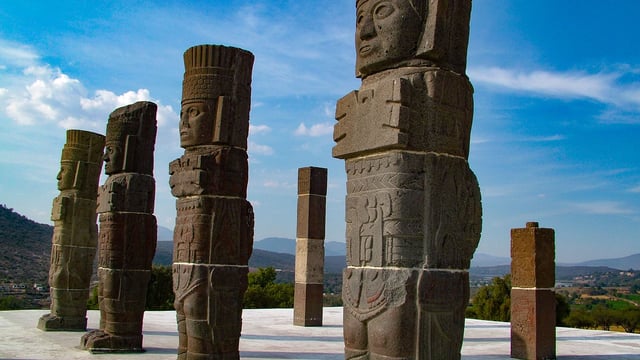
Visiting Tula – The Toltec Capital of Mexico
About two hours north of Mexico City is the archaeological site of Tula, once the capital city of the Toltec Empire. Four basalt statues of Toltec warriors set on the top of a pyramid are the most striking feature for visitors. There is, however, quite a bit to see here, making Tula an enjoyable and highly rated day trip from Mexico City. Easy to achieve yourself, there are also a few options for taking an organised tour, with a group or privately.
Thomas Dowson
- Last Checked and/or Updated 25 January 2024
- No Comments
Tula Entry Tickets & Guided Tours
Entrance ticket.
- Entry ticket only
- Smartphone tickets accepted
- No audio/live guide
More information and/or book online , or select your visit date and other travel options on the calendar below.
Tula + Tepotzotlán Private Tour
- Entry tickets included
- Pickup/drop off in Mexico City
- Live guide – English/Spanish
Tula + Teotihuacan Day Tour
- Entry tickets + lunch included
What Tula lacks in size and grandeur, as at nearby Teotihuacán, it makes up for in charm and atmosphere. Although a relatively small archaeological site, it is situated on a hill overlooking the Tula Valley and the historic town of Tula de Allende (in the Central Mexican state of Hidalgo ). The views of the archaeological sites and the surrounding area from the top of one of the pyramids, what was the Temple of Quetzalcóatl, are quite something.
But it is standing amongst the huge, dark basalt statues of Toltec warriors, the so-called Atlanteans, that is truly sensational. Making this one of the must visit sites from Mexico City. Many visitors rave about their visit. If there is one negative comment that is repeated, it is that the site is too small to warrant an entire day. And so not the best use of limited time.
There are other attractions in Tula de Allende, these are detailed below. But perhaps the best tip for visiting Tula is to combine it with another site. Either another pre-Hispanic site such as Teotihuacán, or some of the fascinating colonial towns between Mexico City and Tula de Allende. Tepotzotlán and Querétaro are two very obvious choices, with both towns listed as UNESCO World Heritage sites.

A Brief History of the Toltec Capital Tula
Chronologically, Tula sits between the fall of Teotihuacán and the rise of Tenochtitlan. As Teotihuacán was starting to decline around 650 AD Tula was only just getting going. People had been living here since about 400 BC, but it was not until 650 AD that we see evidence for a small settlement, 5 km², with modest public buildings. This is what archaeologists have called Tula Chico, or Small Tula.
Visitors can see some remains of Tula Chico. Not much, however, as the remains of this earlier settlement are overlain by Tula Grande. This later settlement, remains of which are seen in the monumental public architecture, started to develop around 900 AD in the power vacuum left by the collapse of Teotihuacán.
Tula reached its peak around 1000 AD, becoming the capital of the Toltec Empire. The city supported a population of an estimated 60,000 people with a further 25,000 in the surrounding area. Tula was the dominant ceremonial centre for an area of at least 1000 km². It was in fact the biggest centre of its time, the city itself measuring some 14 km², but it never reached the size and scale of Teotihuacán.
The history of the site is not well understood, interest in Tula having been overshadowed by other more important and impressive settlements. Early 16th century missionaries found people living here, in a settlement that had already been heavily looted. From what little we do know it seems that Tula was all but abandoned by the mid 12th century. Archaeological evidence suggests the ceremonial centre was destroyed by fire in 1179 AD.

What is There to See at the Archaeological Site of Tula?
Visitors are free to walk around the site by themselves. And even climb the steps to the platform of Pyramid B that has the Toltec warriors.
Today, visitors to the archaeological site get to see what was the ceremonial centre of Tula Grande, a smaller area of remains relating to the earlier settlement known as Tula Chico, a site museum and the Guadalupe Mastache Orientation Centre.
At the entrance to the site is the Jorge R. Acosta Museum, named after the archaeologist who first excavated here. The exhibits focus specifically on Tula and its history, with a variety of artefacts and objects recovered from the site, such as pottery, metalwork, jewellery, sculpted stone and human remains. The orientation centre also has a few archaeological artefacts, but the focus here is on explaining the site’s importance within the broader history of Mesoamerica.

The surviving architectural features of Tula Grande include two pyramids, two ballcourts and several large buildings (one with a series of columns and known as the ‘Burned Palace’), a large, central ceremonial plaza that held an estimated 100,000 people. On three sides of the plaza are the remains of meeting halls with over 1000 meters of benches. It is here you can see beautiful carved stone reliefs depicting warriors and others in procession.

Where is Tula in Mexico?
Tula Archaeological Zone is in the town of Tula de Allende, in Hidalgo State of Central Mexico. More specifically, the town is about 75km or 45 miles north of Mexico City. You can see the exact location marked on our interactive map of Mexico that shows the country’s archaeology and history sites and museums.
Of course you will not confuse Mexico’s Tula with the town of the same name in Russia. But Tula is often confused with Tulum in Mexico, a town on the east coast of the Yucatan Peninsular with a Mayan archaeological site situated just above the beach.
How to Get to Tula de Allende?
For those who have a rental car, getting to Tula from Mexico City is an easy journey under two hours (of course depending on where you start in the capital): head north on Highway 57 until you reach the exit for Tula de Allende at the 77 km mark. From the highway the archaeological site is well signposted.
Public Transport to Tula de Allende
Taking public transport from Mexico City to Tula is straight forward. There are two regular bus services to Tula from Mexico Terminal Norte bus station. This major bus terminal is at the Autobuses del Norte metro stop on Metro Line 5, the yellow line on maps.
A direct, non-stop service runs every hour. The journey takes an hour and a half and costs about 165 Mexican pesos per person, one way.
For around 20 Mexican pesos less, you have the option of a bus ride that makes a number of stops and takes about 2 hours. This service is much more frequent, every 15 minutes or so.
For the direct service you are able to book a specific date and time of travel. For the cheaper service you can only book a ticket for a specific day/date. Getting on a bus is then subject to availability on that date. As the service runs every 15 minutes, you will not have long to wait. So arrive early at the terminus.
Tickets for both services can be booked online at Ovnibus .
From the bus station in Tula de Allende you can either walk, take a taxi or a bus to the archaeological site. A taxi will cost you about 50 pesos, a bus a lot cheaper – take a bus that goes in the direction of Actopan, Iturbe or Santa Ana. Walking to the site will only take about 25 minutes. Turn right out of the bus station on Avenida 16 de Septiembre, turn right at Avenida 5 de Mayo and walk north to the bridge crossing the Tula River. Cross the bridge, turn right (the site is signposted ‘Zone Arqueologica’) onto Avenida Xochiquetzal and continue uphill to the ticket office (also signposted – Acceso Peatonal, pedestrian access).
For those who wish to combine a trip to Tula with Tepotzotlán, this is easily done with public transport. Tepotzotlán is only a 25 minute bus ride from México Central Norte bus station.
Day Trips to Tula
For those who would prefer a private, guided tour to Tula, that includes travel to Tula with hotel pick up, there are a few options. As Tula is worth seeing but does not take long to visit, day trip itineraries include other major archaeological and historical sites that are between Mexico City and Tula.
The more popular options include:
Tula combined with a trip to Teotihuacán – these include hotel pick up and drop off in Mexico City. Check the following suppliers: GetYourGuide , Viator – Viator also have a tour, a longer day tour, that includes the National Anthropology Museum in Mexico City with Tula and Teotihuacán
Tula combined with a trip to Tepotzotlán, where you visit the former Jesuit College of San Francisco Javier, which now houses the National Museum of the Viceroyalty. Check the following suppliers: GetYourGuide , Civitatis , Viator
What Else is There to See in Tula De Allende?
Tula de Allende has its origins in a Spanish monastery, established in the 16th century next to the ancient city. Although the modern day town has relied on the archaeological site for tourism, the area has developed significant industrial activities that make it one of Mexico’s fastest growing cities. Because of the pre-Hispanic and colonial history, visitors often choose to stay a night or two and there are a number of highly rated hotels to suit all budgets. Find a hotel in Tula on Booking.com >>
Most visitors start at the archaeological site of Tula. Once you are finished here, you can visit the ruins of Tula’s first church. At the ticket office you turned left up the hill to the Toltec site. Turning right along a dusty path leads you to ruins of the church. Back in town, the Old Railway Station is used to house a history museum. And in the rock shelters of a nearby hill there is a rock art site you can visit.
Catedral De San José De Tula
Originally a convent set up by Franciscans during the Spanish conquest, making this one of the earliest in Mexico. It was elevated from a parish church to a cathedral in 1961. Architecturally with its austere fortress-like appearance, the church is representative of 16th century monasteries in Mexico.
Quetzalcóatl Historical Museum
Across the road from the cathedral and opposite the town’s garden, a building with immense historical significance for locals was turned into a museum in 1998. The museum has both temporary and permanent displays of contemporary art, the archaeology of the Toltecs and local history.
Add Tula to Your Itineraries & Travel Lists
If you are planning a trip to Mexico you can create your own travel lists (such as places you have been to, places you would like to visit) and an itinerary for your trip. These can also be shared with your friends and on social media. You can see how this is done by watching our Using the Itinerary video on YouTube , or reading the Using the Itinerary page .
For more sites and museums in Mexico, see our Mexico Travel Guide .
At one point the most important city in the Toltec Empire, thanks in part to its strategic location, Tula remains an impressive site which peaked in the 10th century AD, during the Early Postclassic Period. By the 12th century much of Tula was all but abandoned. A few features survive, including the Burned Palace, the Pyramid of the Sun, and the Ball Court, although its best known feature are the ‘Atlanteans’, large basalt statues overlooking the city. Tula’s name comes from a Nahuatl term which can mean either ‘city’ or ‘place of reeds’.
Archaeology Travel Writer
A Couple of Drifters
Where Do We Go From Here?
Mexico City to Tula: A Day Trip Guide
Last Updated on November 3, 2020
Tula is a major archaeological site located 75 km (45 miles) north of Mexico City in the town of Tula de Allende, in Hidalgo State. Getting from Mexico City to Tula is easily done independently . This former Toltec capital is refreshingly free of crowds and touts and is definitely worth a look.
Getting From Mexico City To Tula.
Getting a bus from Mexico City to the ruins of Tula is simple and straightforward: from Mexico City’s Terminal Norte bus station, Ovnibus runs 1st class buses to Tula de Allende (1.5 hrs.) about once an hour for about 150 pesos each way. Also, AVM runs 2nd class buses for slightly less money (2 hrs.) every 15 minutes or so for 130 pesos. To get to Terminal Norte bus station take Metro Line 5 (yellow line) to Autobuses del Norte .
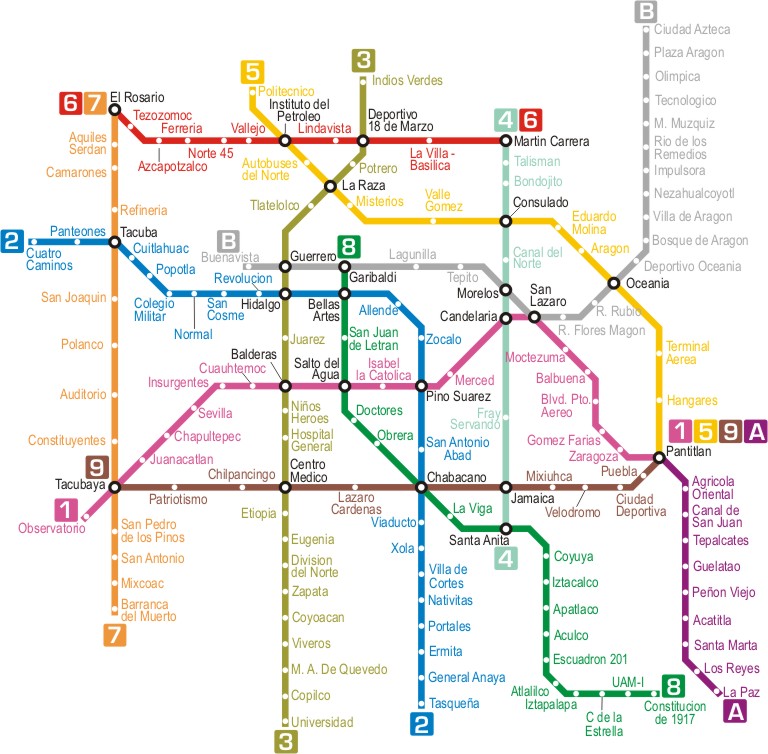
From Tula’s bus station turn right, then left 2 blocks on Avenida Manuel Rojo del Rio to the town center. From the center it’s a 20-minute walk north to the ruins; walk north up Avenida 5 de Mayo to a bridge, then right and uphill to the site entrance. Alternatively, take a cab from the bus station in Tula. Expect to pay 40 pesos for a ride to the site entrance.
Disclosure: This article contains affiliate links to products and services whereby we receive a nominal commission if you make a purchase through one of these links. This comes at no extra cost to you. Please see our Disclaimer for full information.
Find The Perfect Hotel or Some Unique Lodging Options During Your Visit to Mexico.
For unique accommodations you simply won’t beat Airbnb’s Mexico listings . Choose from hip and trendy lofts in the city, entire houses in the country or beachfront casitas – Airbnb has something for every budget!
Interested in conventional accommodation options instead? We recommend Hotels.com to search for a wide variety of rooms throughout Mexico. Choose from familiar chains, boutique properties or independent hotels throughout the country.
Tula de Allende is a typical work-a-day town not trying to impress anyone – and succeeding at it. That said, it’s a pleasant enough place and the ruins are definitely worth the trip. The bus ride to Tula de Allende alone makes for a pleasant day trip from Mexico City .
About Ancient Tula
The earliest evidence of any organized settlement in the immediate area dates from around 400 B.C. This may have been under political control from Teotihuacan, whose eventual fall laid the way for other city-states. Tula, derived from the Nahuatl phrase Tollan Xicocotitlan, started out as a scrappy outlier in a region dotted with competition.
A more organized settlement, known as Tula Chico, was occupied between 650 and 900 A.D and peaked during it’s first 100 years. During that time Tula Chico, with a population between 20,000 and 25,000, may have occupied over 6 km² (2.3 mi²). The bulk of this remains buried beneath the current site, known as Tula Grande.
For reasons unknown, people abandoned Tula Chico and Tula Grande consumed this location over time. This grew in size to perhaps 14km² (5.4 mi²) with a population of about 60,000. The central plaza alone held 100,000 people and testifies to the regional importance of this place. The economic base of Tula centered around the mining and crafting of obsidian and agriculture.
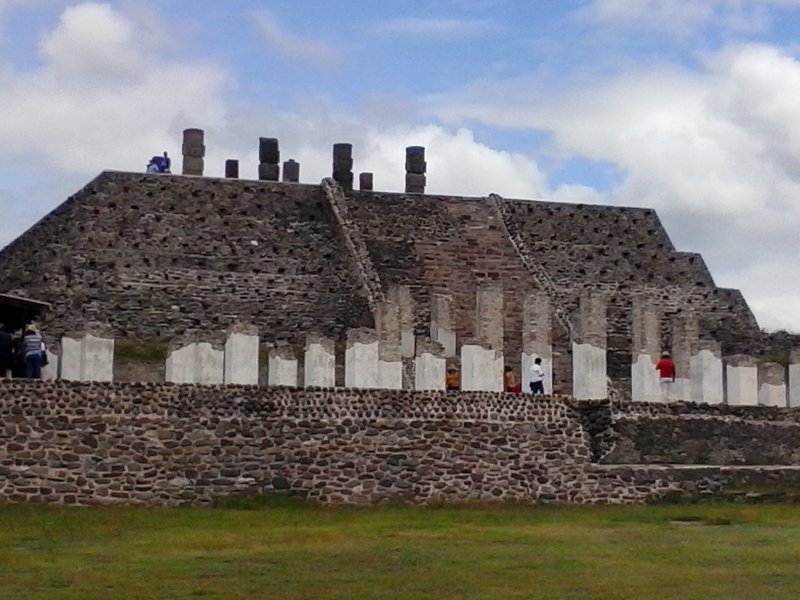
The once great Toltec capital was in ruin as the Aztec capital of Tenochtitlan thrived. Still, Tula was venerated in their myths because of it’s relation to the all-mighty serpent-god Quetzalcoatl. The city fell about 1150 because of environmental and social factors. Evidence strongly suggests people abandoned Tula and razed the ceremonial center during a fitfully drawn-out 30-year period.
Hours: 9:00 am – 5:00 pm Daily
Admission: 70 pesos
Website: inah.gob.mx
A small on-site museum displays ceramics, jewelry, metalwork and stone figures from ancient civilizations throughout Mexico. Your admission includes entry to the museum and all signs are in Spanish and English . Allow 30 minutes for the museum and about 2 hours for the ruins.
Thankfully, Tula is free of vendors and touts, allowing you to simply enjoy the ruins. The lack of visitors also adds to the pleasantness of this site. Informative signs throughout the site help you understand aspects of the architecture here.
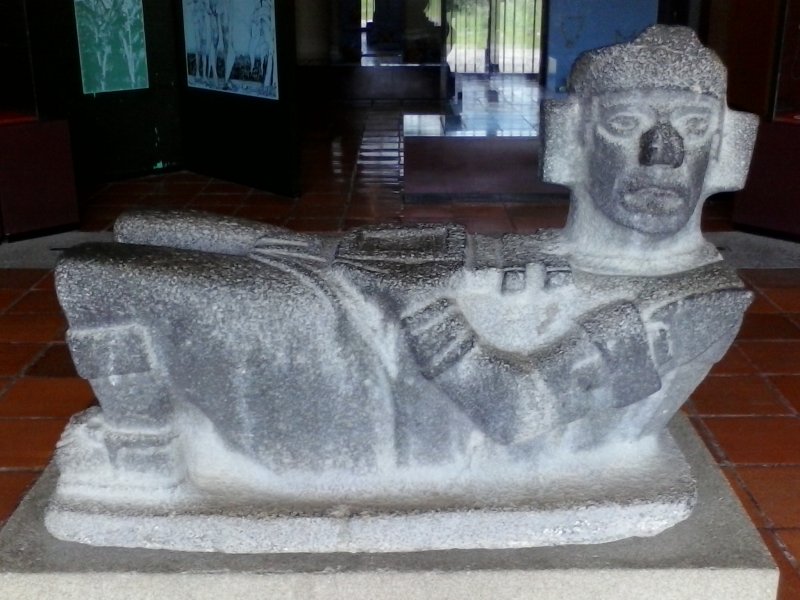
The site of Tula is most noteworthy for 15-foot tall basalt figures carved in the likeness of Toltec warriors. Found atop Pyramid B, known as the Pyramid of the Quetzalcoatl, these Atlantean figures still hold sentry above the site.
Atlantean figures are simply support pillars sculpted in the form of humans. In this case the figures represent four armored soldiers and are quite rare in Mexico. The four rather plain pillars behind these once supported a roof atop the pyramid along with the four Atlantean figures.
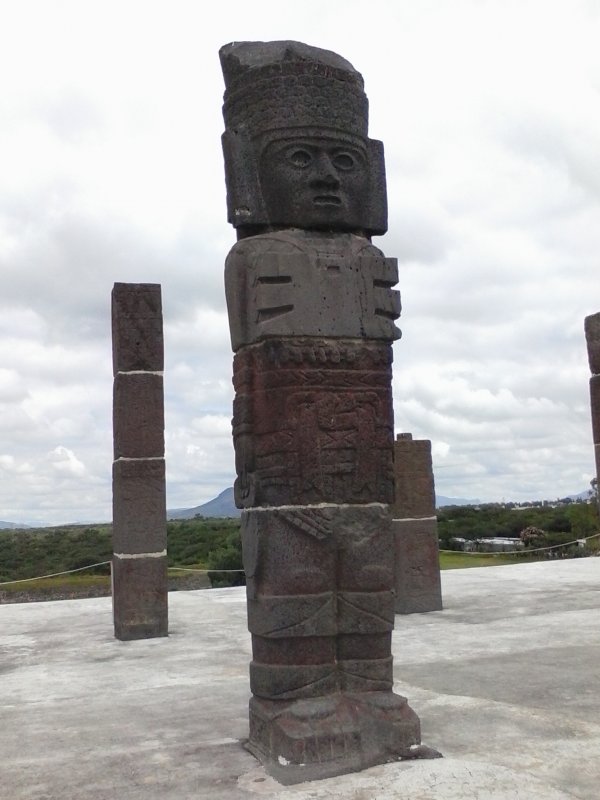
Plenty of macabre-looking carvings decorated this ancient city, mostly along the north wall of Pyramid B. Scenes such as snakes devouring skeletons, eagles eating hearts and ritual torture decorate this wall. As with many ancient civilizations in Mexico, Tulans were fond of the ballgame and 2 ball courts are found on-site.
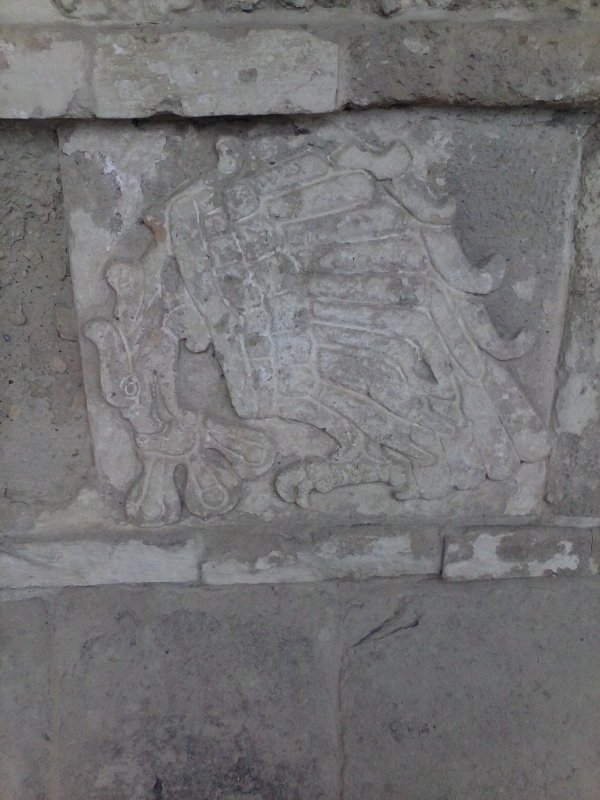
In Conclusion…
Mexico is noteworthy because of her past civilizations and the vast cities they built. We are fortunate to be able to understand their world-view due to the variety of legacies they left behind. Their accomplishments amaze us today and continue to mystify experts. The Aztecs, who left a prolific ancient legacy in Mexico City and beyond, were only one such civilization.
The city of Tula de Allende and it’s proximity to the ruins make this an easier site to visit than Teotihuacan independently and provides a more pleasant experience all around. Of course, Tula cannot compare to the size and significance of Teotihuacan but it deserves a look – check it out!
Tula, like Teotihuacan, makes a great day trip from Mexico City. Enjoy this site independently and learn more about the ancient cities which flourished in the Valley of Mexico. Of course, explore more places around Mexico City on your own, too.
Pin Me Now!
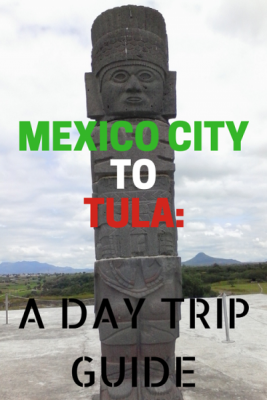
Leave a Comment Cancel
Your email address will not be published. Required fields are marked *
Email Address
Save my name, email, and website in this browser for the next time I comment.

Stories by Soumya
The Travel Blog of a Culture Addict
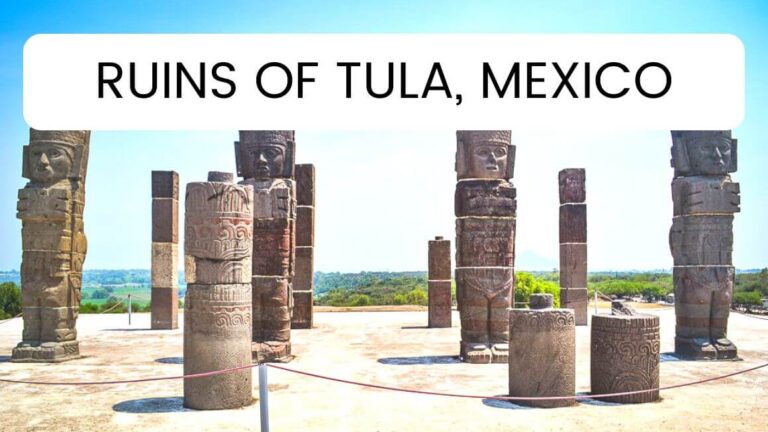
Ruins Of Tula Mexico – The Lost City Of The Toltecs
Last Updated on January 21, 2024 by Soumya
The Ruins of Tula, located in the Mexican state of Hidalgo , are the remnants of the ancient city of Tula or Tollan, once the thriving epicenter of the Toltec civilization.
Known to have flourished between 900 and 1150 CE, the Toltec city of Tula was renowned for its complex societal structure and advanced architectural prowess.
The most iconic structures are the towering Atlantean figures made of stone that represent Toltec warriors. They stand guard over the Temple of Quetzalcoatl, adding to the mystique and grandeur of the lost city of Tula.
Visiting the Tula Archeological Site in Mexico provides a glimpse into the rich history and cultural legacy of the Toltecs , a Mexican civilization that we don’t talk about much.
In this ultimate travel guide for Tula, Mexico, I tell you about the best things to do in Tula, how to get to the ruins from Mexico City, and lots of travel tips.
Please note: This post may contain affiliate links which means I may earn a commission if you make a purchase by clicking a link on this post. This will be at no additional cost to you. Affiliate links help me keep this website up and running. Thanks for your support!
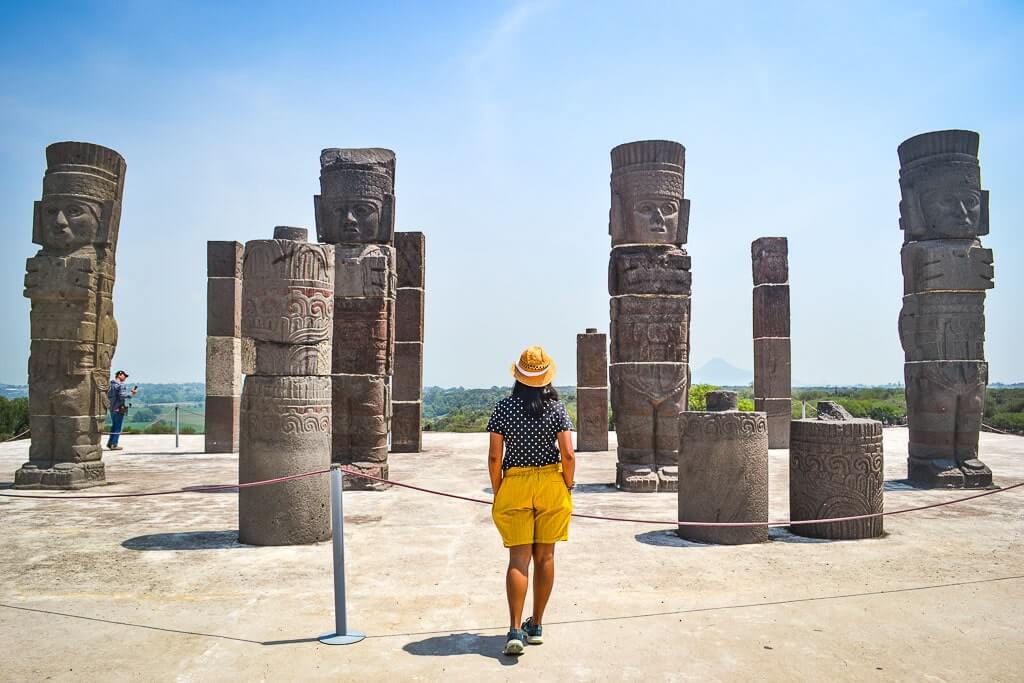
Best Things to Do at the Ruins of Tula, Mexico
The Archeological Site of Tula or the Tula Ruins are located near a town called Tula de Allende in the State of Hidalgo in Mexico.
Tula was once the prosperous capital of the Toltecs . This empire was an indomitable force in Central Mexico between the fall of Teotihuacan and the rise of the Aztecs .
Here are some of the best things to do in the ancient city of Tula in Mexico.
Explore the Ball Court of Tula Ruins
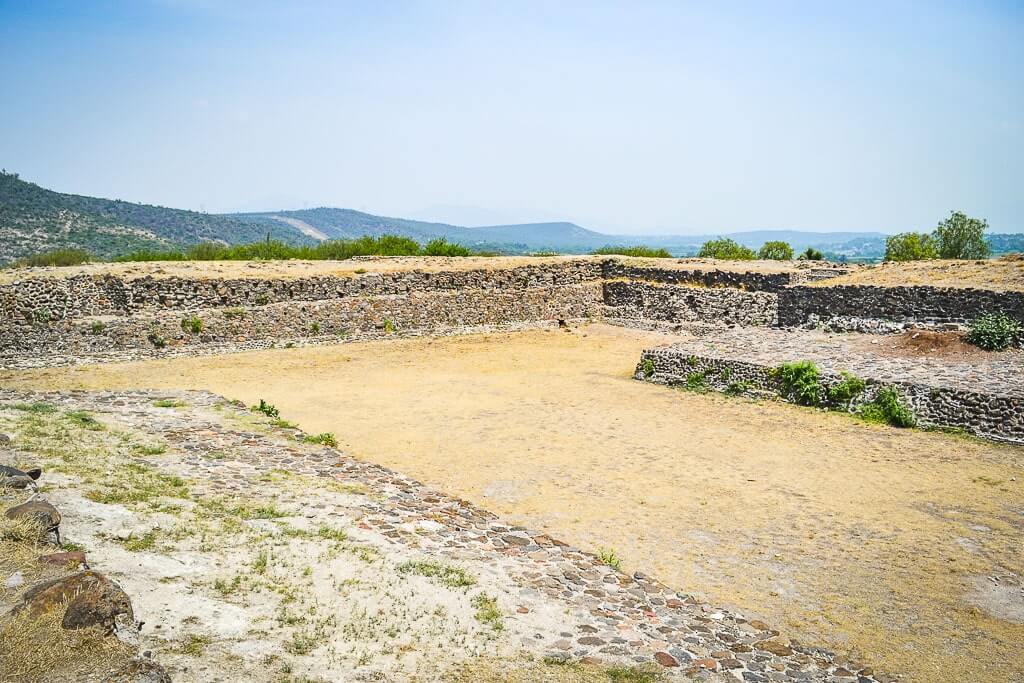
One of the must-visit spots in the Tula Archeological Site is the Mesoamerican ball court. It is also the first thing you’ll encounter when entering the Tula archeological site.
This unique structure was central to Toltec society and was essential to religious and social rituals .
Only a little is left of the ball court except for some niches that once held sculptures of Tollan gods .
The sheer scale of the ball court is mind-boggling. Walking through the Tula Ball Court gives a sense of the grand spectacles that once took place there.
✦ Trivia : Ball games were standard across pre-Hispanic civilizations. They were loud, rough, and exciting. More often, they were connected with human sacrifice rituals. The largest Mesoamerican ball court was found at Chichen Itza , and the Mayans were one of the civilizations that made the ball game famous across Mexico. Ulama, a non-brutal form of the ball game , survives even today in some parts of Sinaloa in Mexico.
Visit the Wall of Snakes (El Coatepantli)
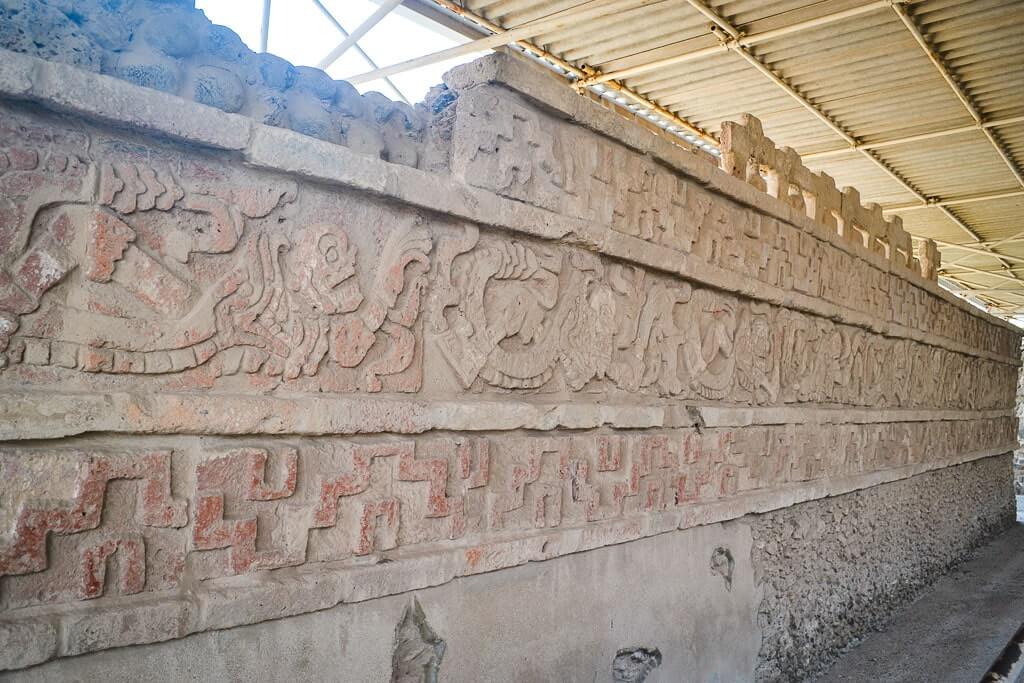
A unique thing to see at the Tula Archeological Site is the Wall of Snakes, also known as “El Coatepantli.”
Named for its intricate carvings of feathered serpents devouring human figures and skeletons, the Coatepantli symbolizes Toltec mythology and cosmology.
The carvings are believed to be connected with the Toltec human sacrifice rituals.
The wall once served as a boundary marker, delineating sacred space within the ancient city of Tollan.
Today, the Wall of Snakes gives us an insight into the artistry and the religious rituals of the Toltecs.
This part of the Tula ruins is covered, providing respite from the hot Mexican sun.
Check out Tula’s famous Atlantean Figures at Pyramid B
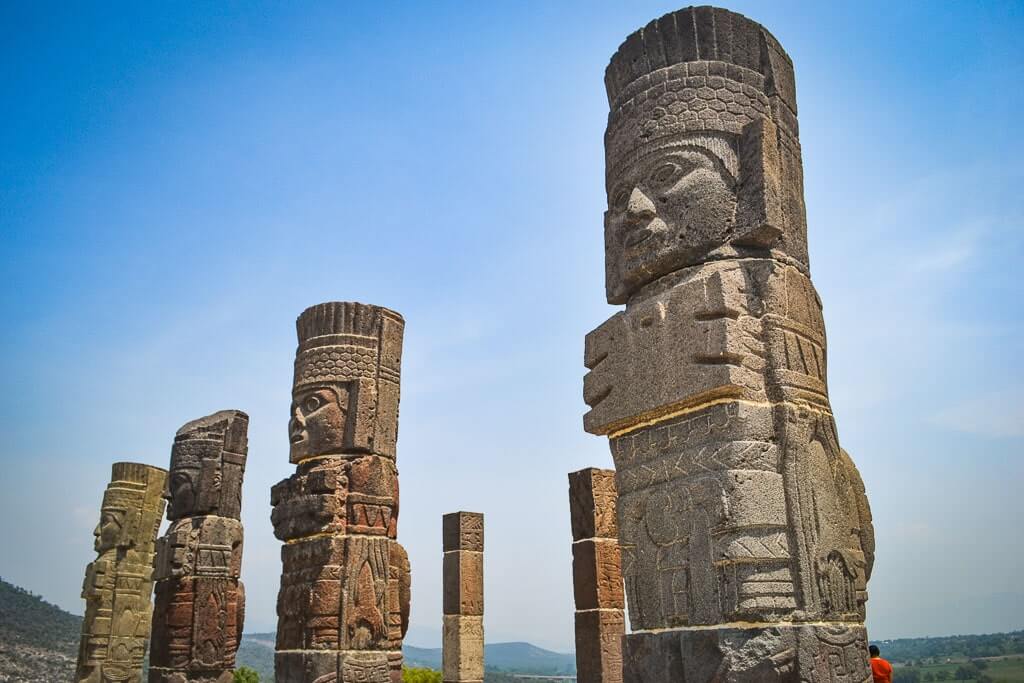
The Pyramid B is the main pyramid at Tula ruins.
Also known as the Pyramid of Quetzalcoatl or of the “Morning Star,” Pyramid B has, on top of it, massive stone figures known as the Atlantean warriors that are symbolic of Tula.
Believed to represent Toltec warriors, these Atlantean figures are unique to Tula in Mexico.
Even though Atlantean figures have been excavated in other Mexican historic sites, including Chichen Itza and the Aztec ruins of Mexico City, the ones at Tula are colossal – about 15 feet tall. It was done to convey the power of the Tollan king and instill fear in the enemies.
Sculptors from the ancient Toltec Empire made these figures from local stone and carved them by hand. Notice their feathered headdresses, armored clothing, and footwear.
It is believed that these figures held up the roof of the altar of Quetzalcoatl.
Pyramid B was an important religious space during the Toltec times. Royal families and important priests would have had access to this altar.
You can still climb Pyramid B today and see the Atlantean figures up close. The pyramid is about 30 feet tall, so the climb is manageable.
Visit the Burnt Palace in Tula

Another important attraction at the ruins of Tula is the Burnt Palace.
It is called the “Burnt Palace” because it was damaged by fire long ago but still bears impressive stonework and architectural elements.
This was where the kings held their religious ceremonies in which all important dignitaries participated.
There’s a central hall, and many smaller ones surround it.
Even though there are no roofs today, the columns that held up roofs are still there, making the entire place look like a maze of columns. That’s why it is also called the Palace of the Columns.
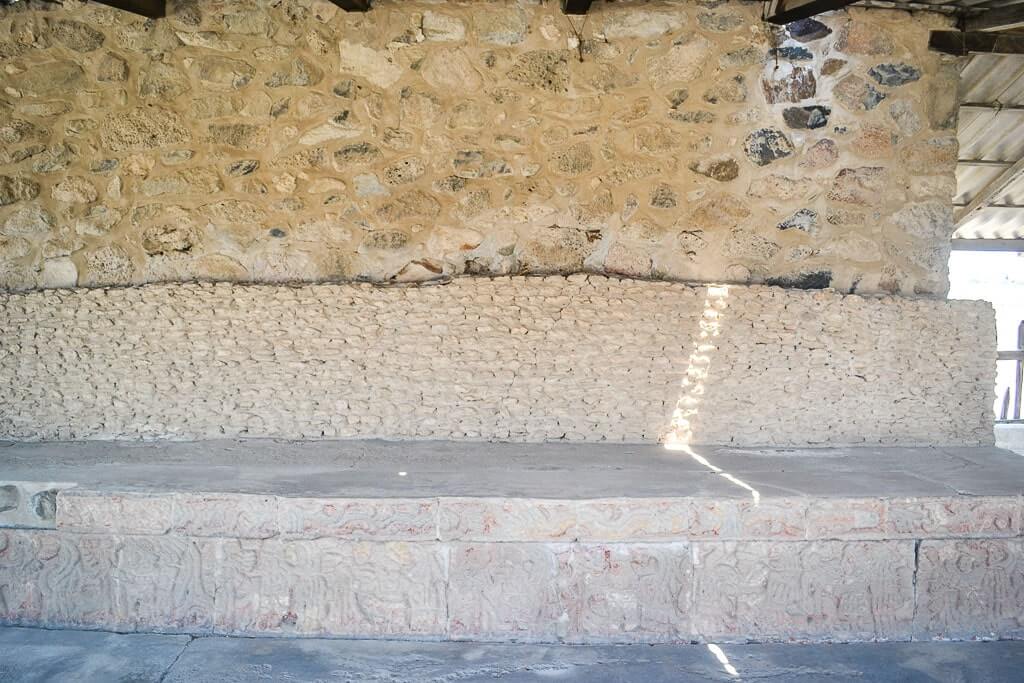
You can also see several low benches with extensive carvings at the palace. They reminded me of the benches at the Templo Mayor Aztec Ruins in Mexico City Historic Center .
Carved with warrior processions, these benches were used for sitting in the olden days but had a more symbolic representation of wars and victories.
Walk around the plaza
Once you’re done exploring the main attractions of the Tula ruins, I recommend walking around the massive plaza.
Surrounded by important buildings on all sides, the plaza at Tula would once have a hub of all activity.
There are other pyramids, though not in a state of climbing, a wall of skulls, an adoratory, and another ball court a few meters away.
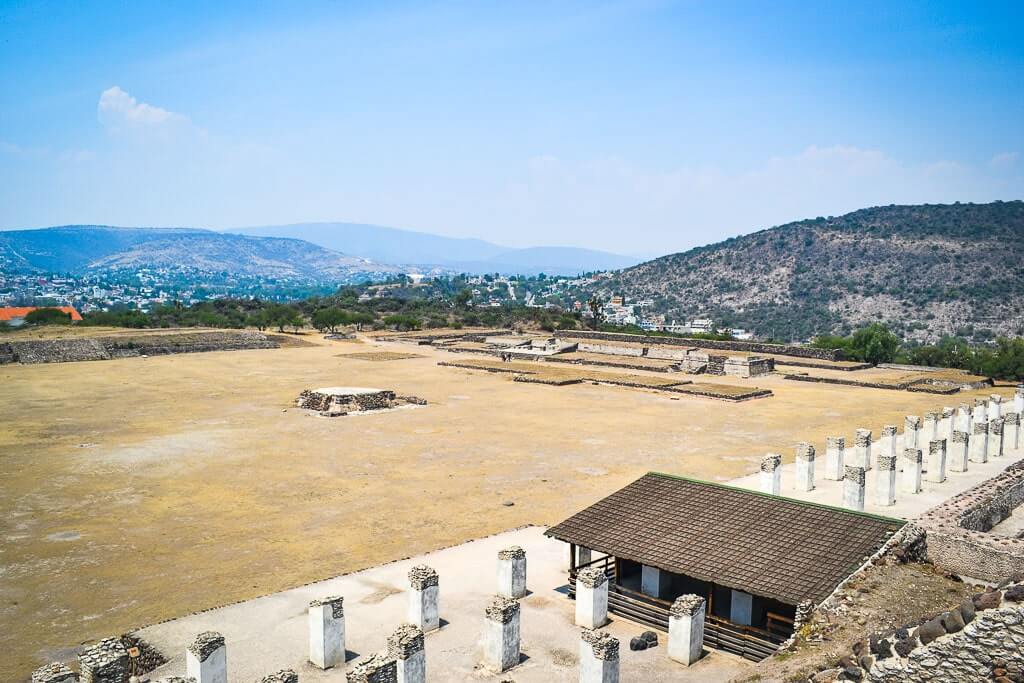
Explore the Tula Museum
Be sure to visit the Archeological Museum when visiting the ruins of Tula in Mexico.
The museum houses various artifacts discovered during archeological excavations and provides valuable context about Toltec culture and history.
Practical Information for Visiting Tula Ruins, Mexico
Tula archeological site opening hours.
The Archeological Site of Tula in Hidalgo, Mexico, is open every day of the week, 9:00 am to 5:00 pm. Box office closes at 4:30 pm.
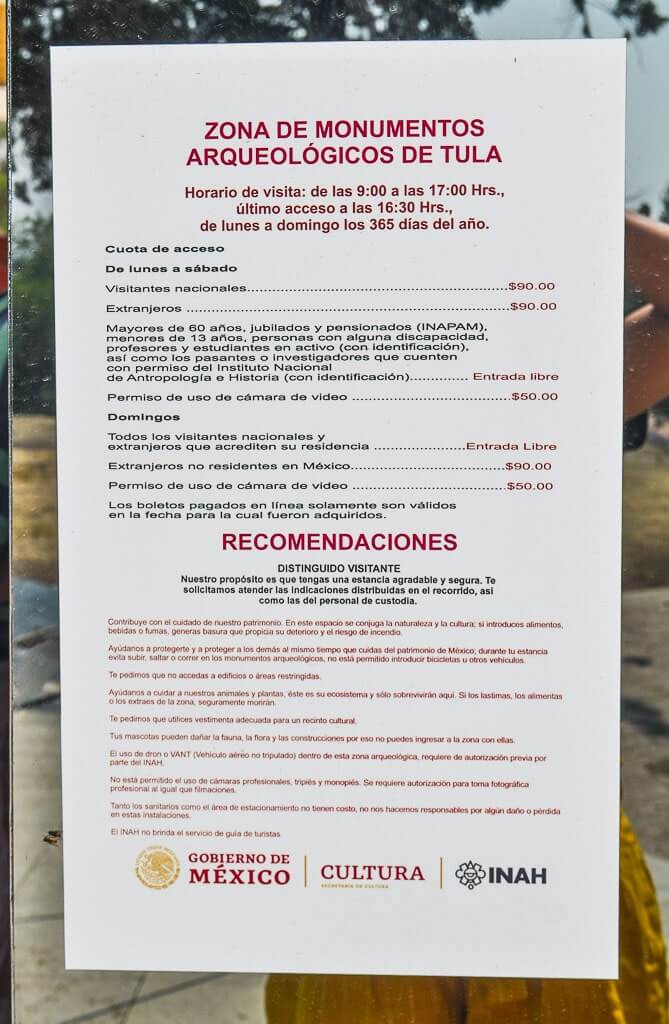
Even though many websites, including the official INAH website , say that the ruins are closed on Mondays, this poster (see above) at the Tula ticket office tells us that it is open Monday – Sunday .
We did not visit on a Monday but asked the ticket office guy, who confirmed it was open on Mondays.
If you’ve visited Tula on a Monday, do let us know in the comments below. It is hard to be sure otherwise.
Admission Tickets for Tula
You can buy tickets to the Tula Archeological Site at the box office .
There are barely any crowds here, given that it is a true Mexican hidden gem . So, don’t worry about long lines.
You can also buy your Tula Archeological Site tickets online here .
The tickets cost 95 pesos ($5.5).
How to get to Tula Ruins from Mexico City?
The ruins of Tula are only a couple of hours away from Mexico City. Therefore, they are easily covered on a day trip from Mexico City .
You can get to the Tula ruins from Mexico City by bus, car, and tour.
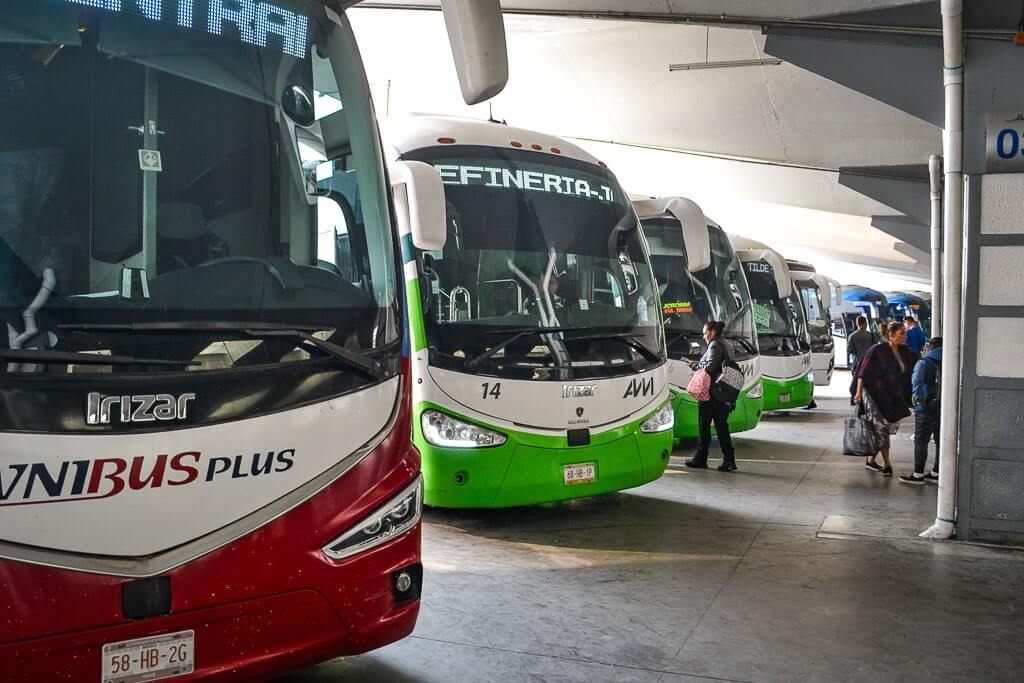
Getting to Tula from Mexico City by Bus
The cheapest and the most common way to get to Tula from Mexico City is by bus. You can take a direct bus from the Norte bus station in Mexico City to Tula.
The journey takes approximately two hours, depending on traffic.
The bus to Tula will drop you at the Tula de Allende town bus station. From the bus stop in Tula de Allende, you can take a taxi to the Tula ruins – this journey takes around 10 mins.
We took the Ovnibus from Mexico City to Tula , and it was a comfortable journey.
Even though it is easy to get to the Tula ruins by bus and taxi, there is a small problem when returning from the ruins.
You will not find taxis easily at the Tula archeological site. You’ll have to walk to the main road (about 7-10 mins) and then wait for a cab to show up.
It is best to have your car or visit with a guided tour in such a scenario.
✦ Pro Tip : Refer to our guide on Mexico City Public Transportation for details on bus stations and metro lines.
Getting to Tula from Mexico City by Car
A more convenient option is renting a car and driving from Mexico City to Tula.
The journey is about 50 miles (82 km) and should take around 1.5 hours one way.

Getting to Tula from Mexico City by Guided Tour
Another great way to visit the ruins of Tula is to book a guided tour from Mexico City .
Guided tours of Tula from Mexico City typically include roundtrip transportation, a tour of the archaeological site, and a visit to the nearby Pueblo Magico, Tepotzotlan , the churrigueresque capital of Mexico.
Even though this option is a little expensive, a guided tour is the best way to get from Mexico City to Tula because you don’t have to worry about logistics and can sit back and relax while learning a lot from your local tour guide at the same time.
Mexico Tula Ruins Travel Tips
- The Mexican ruins of Tula are primarily out in the open, and it can get really hot here, even in winter. Be sure to carry a hat, water, and sunscreen.
- The walk from the entrance gate to the ruins is pretty long, about 15 minutes. Wear a good pair of walking shoes so that you’re comfortable walking and climbing pyramids.
- Getting a taxi to Tula ruins from the bus station in Tula de Allende is easy. But the return trip is more complicated. You’ll not find taxis easily at the archeological site. We had to walk to the main road and wait a while before we got one. Having your own car or booking a guided tour is always best.
- Visit on a guided Tula ruins tour to get deeper insights into the ancient city. There are markers at the site, but they don’t say much about the Tula structures except a few lines. Further, a guided tour takes care of transport, which can be a pain in Tula.
Loved this Mexico Tula Ruins Visitor’s Guide? Pin it for later!
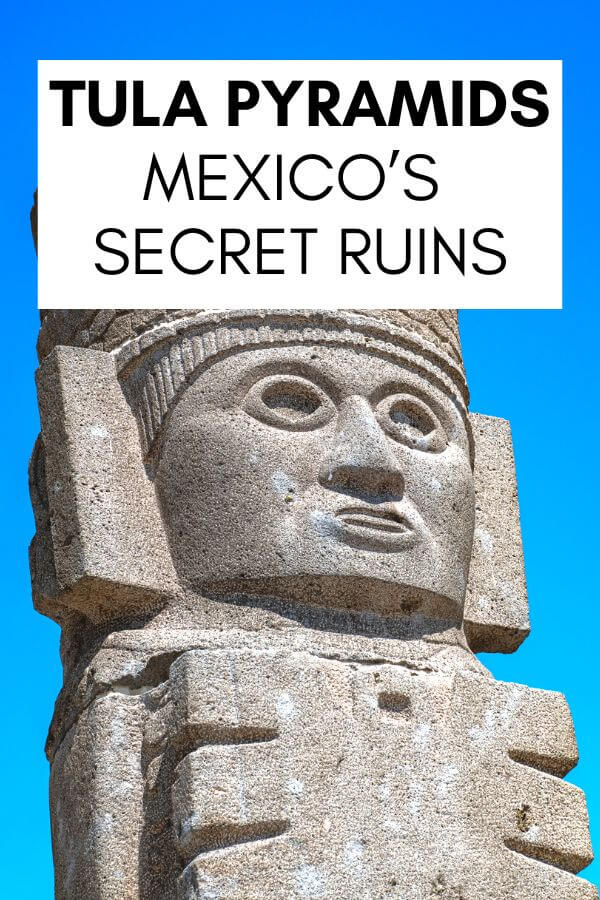
You may also like:
- 7 Fascinating Mexico City Pyramids To Visit In 2024
- 12 Best Hidden Gems In Mexico That Are Perfect For…
- 20 Most Fascinating Ancient Pyramids In Mexico With…
Leave a Reply Cancel reply
Your email address will not be published. Required fields are marked *
Post Comment
This site uses Akismet to reduce spam. Learn how your comment data is processed .
Begin typing your search term above and press enter to search. Press ESC to cancel.
Mexican Routes
- Archaeological Sites / Hidalgo
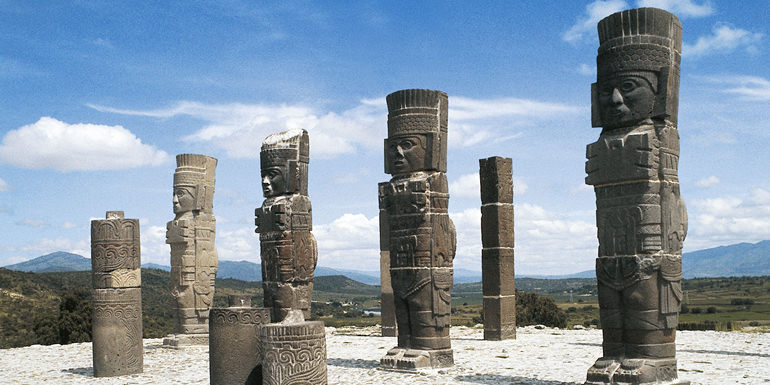
by admin · Published June 12, 2017 · Updated February 25, 2024
Tula is a Mesoamerican archeological site, which was an important regional center that reached its height as the capital of the Toltec Empire between the fall of Teotihuacan and the rise of Tenochtitlan.
Tula has not been well studied in comparison to these other two sites, and disputes remain as to its political system, area of influence, and its relations with contemporary Mesoamerican cities, especially with Chichen Itza.
The archaeological site is located in the city of Tula de Allende in the Tula Valley, in what is now the southwest of the Mexican state of Hidalgo, northwest of Mexico City.
The archeological site consists of remains of an earlier settlement called Tula Chico as well as the main ceremonial site called Tula Grande.
Tula fell around 1150, but it had significant influence in the following Aztec Empire, with its history written about heavily in myth.
The feathered serpent god Quetzalcoatl is linked to this city, whose worship was widespread from central Mexico to Central America when the Spanish arrived.
Archeological site
The Tula site is important to the history of Mesoamerica, especially the central highlands of Mexico. Still, it is generally overshadowed by its predecessor Teotihuacan, and one of its successors, Tenochtitlan.
The name “Tula” is derived from the Nahuatl phrase Tollan Xicocotitlan, which means ‘near the cattails’. However, the Aztecs applied the term Tollan to mean ‘urban center’, and it was also used to indicate other sites such as Teotihuacan, Cholula, and Tenochtitlan.
What remains of the ancient city, is located 75 km north of Mexico City. Geographically, it is in the Tula River Valley, at the south end of the Mesquite Valley in a region that indigenous records called Teotlapan (“Land of the Gods”).
This area lies at an altitude of 2000 to 2200 m above sea level and has a semi-arid climate. It has only three continuously flowing rivers and streams, the largest of which is the Tula River. During the rainy season, several streams flow.
The modern archeological site consists of the ceremonial center of Tula Grande, an area called Tula Chico, the Jorge R. Acosta site museum, and the Guadalupe Mastache Orientation Center.
The museum is at the entrance to the site and is named after one of the archeologists who worked on the site for years. The interior is organized into various sections and contains sculpted stone works as well as human remains.
The city is aligned at 17 degrees east of true north, similar to structures at Teotihuacan although the first village was aligned with true north between 700-900CE.
The ceremonial center of the city is located on a limestone outcropping, with steep banks on three sides, making it defensible.
War and sacrifice are prominent themes at the site with images representing warriors such as jaguars and coyotes as well as eagles eating human hearts. There are also images of serpents eating skeletal figures and skulls in various areas.
The main structures of the ceremonial center include two pyramids, including the atlas figures, two main Mesoamerican ballcourts, and several large buildings, one with a series of columns that faced a large plaza.
The large central plaza has space for 100,000 people. On three sides, there are long meeting halls with ceilings supported by columns all facing the plaza with over 1000 meters of benches, which have stone reliefs depicting warriors and others in procession.
The architecture indicates a change from rituals performed by only a few people in closed spaces to large ceremonies to be viewed by many. These ceremonies were dominated by warriors.
The major attraction of the site is Pyramid B also called the Pyramid of Quetzalcoatl or the Morning Star. It is a five-tiered structure similar to the Temple of the Warriors at Chichen Itza.
At the top of Pyramid B are four massive columns each carved in the likeness of Toltec warriors which once supported the roof of the temple on top of the pyramid. Each warrior figure is of basalt, 4 meters high, with an atlatl or spear thrower, incense, a butterfly-shaped chest plate, and a back plate in the shape of a solar disk.
Today this vestibule and building (Building C) are a space filled with broken columns.
Building C is better known as the Burnt Palace named after evidence that it was burned. This pyramid is also surrounded by the Coatepantli or serpent wall, which was later the inspiration for a similar structure in Tenochtitlan.
The earliest well-defined settlements in the Tula area appear around 400 BCE. Tula was probably settled by people of various ethnic backgrounds which may have included the Nonoalcas and the Chichimecas from the south and north respectively.
The area probably was under the political control of Teotihuacan in the Epiclassic period, according to Teotihuacan designs found on Tula pottery. The area’s lime deposits were probably an important source of the plaster used in construction.
The constructions at Tula Chico are smaller than those in other Epiclassic sites and were probably a minor player in the political and economic activity of the time.
Tula Chico’s occupation is from 650 to 900. From 650 to 750, Tula Chico developed, and at its height spanned five to six km2, parts of which may be buried under Tula Grande. The population was somewhere between 19,000 to 27,000 at its height.
Tula Chico was abandoned between 850 and 900 CE, and Tula Grande began to develop. After the decline of Teotihuacan, there was a power vacuum with city-states dominating small regions.
Tula ceramics change during this period, as styles and techniques come under new influences. At the same time, settlement patterns of the area significantly changed with occupation mostly on hilltops and high hillsides.
The city rose to prominence after the fall of Teotihuacan and reached its height between 900 and 1150. Although Tula Grande (Big Tula) grew to be larger than anything contemporary with it, it never grew to the size of Teotihuacan.
The city at its height probably covered 14 sq km with a population of about 60,000 with another 20,000 to 25,000 in the surrounding 1000km2, dominated by the ceremonial center of Tula Grande.
Urban and rural house units indicated the importance of extended family groups but the scale of these seemed to have become smaller over time. Tula had defensive fortification at Las Ranas and Toluquilla against the Chichimecas.
Its political sphere is thought to include most of the present state of Hidalgo, into the Valley of Mexico, and possibly into the Toluca Valley and the Bajío. Much of this is done by comparison of ceramics but this can indicate political or economic influence.
At that time, Tula was a fertile region near obsidian mines and on an important trade route.
Its economic base was agriculture and the mining and crafting of obsidian. It appears the craft was practiced by about half of the occupants, along with the working of travertine and ceramics, taking over this function from Teotihuacan.
Tula probably did not rule an empire but may have ruled a regional state.
Long-range contacts are indicated by the appearance of ceramics from eastern Mesoamerica, grey-green plumbate from southern Guatemala, and polychrome ceramics from Costa Rica. Tula probably traded obsidian in return.
The socioeconomics of Tula society is thought to have consisted of a ruling elite class, a craftsmen class, a merchant class, and a large number of farm workers. Most of the farm workers were outside Tula proper with most of the other classes in the city.
Excavations in the area have found evidence of the cultivation of chili peppers, amaranth, squash, and maguey along with corn and beans. Several wild plants were harvested including mesquite beans and cactus fruit.
There is evidence of domesticated turkeys and dogs. Irrigated corn was the most important crop with anywhere from 3000 to 10000 hectares cultivated. It may not have been enough to feed the large population.
There is an unoccupied area varying from one to three km wide which was probably agricultural. It has been proposed that the area received more rainfall during the Classic period than now which may have allowed for more large-scale agricultural production without irrigation.
They probably had a form of a hieroglyphic writing system, but no evidence exists except for an occasional glyph on a structure.
Tula did not last as long as other Mesoamerican dominions.
Around 1000, there were problems created by the leeching of soil and the drying of the climate. This moved Chichimecas south from their drying homelands creating ethnic strife which eventually resulted in the city’s collapse.
Many of the living quarters appear to have been abandoned by 1150. It is not known when the ceremonial center fell but it was burned and the pyramids destroyed. There is evidence of the ceremonial center being burned in the 12th century.
Ethnohistoric sources mention other rulers and a king list was developed from them. The chronology dates the destruction of Tula around 1179 while under the rule of Ce Acatl Topilitzin. However, this story has been disputed.
After the end of Tula, the site was looted, but it continued to be occupied through the rest of the Mesoamerican period and on into the colonial period. According to Bernardino de Sahagún, craftspeople were still found in Tula at the time of the conquest including scribes, stonecutters, masons, feather workers, potters, and more.
The site was determined to be that of Tollan and the Toltecs after ethnographic studies and archeological work from the 1950s to the 1970s. However, Tula is not well understood, especially in its relation to its predecessor of Teotihuacan and little has been published.
No detailed archeological map of the city exists. Most studies have Tula remaining after the Epiclassic cities such as Teotihuacan collapsed, becoming the major power in the early post-classic, but some archeologists dispute this, putting its height earlier with the other cities.
Several misconceptions about the site include that it has no system of avenues, was relatively poor, had no walled residential complexes, and had only small mound clusters. It did have a grid system but it had several major reorientations.
Large residential complexes have been unearthed just outside the ceremonial center.
The elite also had access to many of the finest handcrafted items then available in Mesoamerica. The size and nature of the city’s political sphere are in dispute. There are no written records and the archeological evidence is scant.
Influence of Tula
There is evidence of Tula influence in other parts of Mesoamerica, mostly seen in pottery in Tula and other areas. One of the most debated questions is what, if any, relationship there might be between Tula and Chichén Itzá far to the south in the Yucatán Peninsula.
The idea comes from the fact that there are similarities in various art and architectural styles. Neither could certainly have conquered the other, but there is evidence that they may have been connected through trade networks.
By the time of the Spanish conquest, Quetzalcoatl, the feathered serpent deity was widely worshipped from what is now central Mexico down into Central America.
The god is linked to a legendary ruler of Tula, Ce Acatl Quetzalcoatl, who was often simply referred to as Quetzalcoatl.
Mythological accounts surrounding the fall of Tula have this ruler succumbing to temptation by a dark deity named Tezcatlipoca, destroying the city.
The fallen ruler then wanders to the Gulf Coast and immolates himself becoming the morning star (Venus).
The city’s history remained important through the Aztec Empire and is reported in the codices written after the Spanish conquest. However, most of these stories are heavy in myth.
These tend to start with the Toltecs and the city of Tula, followed by the migration of the Mexica to the Valley of Mexico. The stories either portray Tula as a kind of paradise in which the inhabitants master the sciences and arts or a city filled with strife headed for a downfall.
In these, the last ruler, Quetzalcoatl, is a legendary being with archetypical qualities.
Much of Toltec history was lost when Izcoatl burned the history books after founding the Aztec Empire. The planning of Tula was adopted by some Aztec city-state rulers for their urban centers.
How to get there
From Tula de Allende walking around 1,5 km (15 min) From Tula de Allende by taxi (1-2 min)
From Mexico City to Tula de Allende by bus (2:30 hours) From Mexico City to Tula de Allende by taxi (1 hour)

Tula archeological site on Google Map
State of Hidalgo Toltec civilization Tula
Make a small donation
Contact us:
- All Categories Archaeological Sites Blog Cenotes & Grottoes Colonial History Aztec Civilization Conquest Maya Civilization Olmec Civilization Holidays & Festivals Islands Local Guides & Tours Mexican Routes Mountains & Volcanoes Mythology & Religion Nature & Wildlife Nature Wonders Pueblo Magico Ranches & Haciendas Reservas Naturales Resorts & Beaches Rivers, Lakes & Lagoons States Aguascalientes Baja California Norte Baja California Sur Campeche Chiapas Chihuahua Coahuila Colima Durango Guanajuato Guerrero Hidalgo Jalisco México Mexico City Michoacán Morelos Nayarit Nuevo León Oaxaca Puebla Querétaro Quintana Roo San Luis Potosí Sinaloa Sonora Tabasco Tamaulipas Tlaxcala Veracruz Yucatán Zacatecas Theme Parks Towns & Cities Villages

Want to collaborate?

25 day tour around Yucatan Peninsula
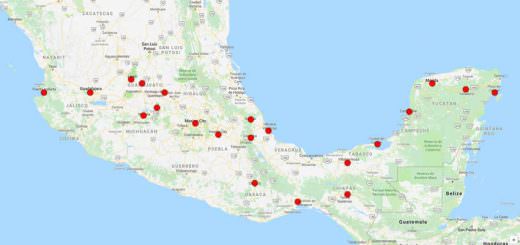
65 day tour around Mexico
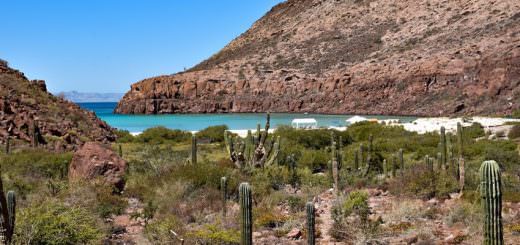
21 day travel trip through Baja California
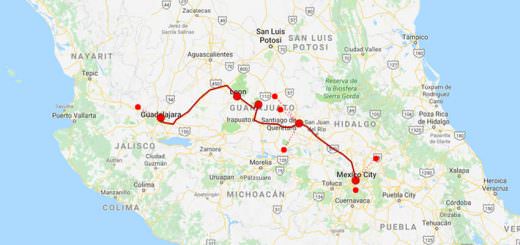
15 day tour Mexico Colonial
- Tula Archaeological site

- Share it on Facebook
- Share it on Twitter
- Share it on Google+
- Share it on Whatsapp
- Share it via SMS
- Share it on Messenger
- Share it via Email
(773) 100 3654 .
Km. 2 Carretera Tula - Iturbe, Carretera Tula -Iturbe, Tula de Allende, Hgo.. 42900.
Tollan-Xicocotitlan, now known as the Archaeological Site of Tula, was the Toltec state capital and the most influential urban center in the central region.
The Archaeological Site of Tula is located in the city of Tula de Allende in the Mezquital Valley in the State of Hidalgo, 88 km west of the city of Pachuca and 93 km northwest of Mexico City. According to the annals of Cuauhtitlan and the Historia Tolteca Chichimeca, among other sources, the term Tula comes from the Nahuatl word tollan, a derivative of Tollin, meaning cane or reed. The word Tula comes from Hispanic pronunciation of the Conquistadors.
The god Xicocotitlan invites you to find Xicuco, the hill that is to the north of the area and which was regarded as a sacred mountain. Tula, the place of the tules or reeds, was founded by the king-priest Ce Ácatl Topiltzin Quetzalcoatl after avenging the murder of his father Mixcóatl.
Its chronology is between 600 and 1521 AD with Tula reaching its peak between 700 and 1150 AD at which time it expanded to an area of almost 16 square kilometers, which included public and private areas, plazas, temples, and palaces and also places of worship, trade, and administration. It grew to around 85,000 inhabitants.
So along with Tenochtitlan and Teotihuacan , it was one of the major urban centers of the Central Highlands of Mesoamerica around 1000 AD and was probably the largest city in this region.
Main buildings of the Archaeological Site of Tula
In the tenth century of our era, Tula began to change and several monumental buildings were built, such as the Pyramid B or Temple Tlahuizcalpantecuhtli, on top of which are the famous Atlantes of Tula , the basalt stone sculptures 4.60 meters in height representing high-ranking Toltec warriors.
Originally the Atlanteans could not be seen by the people, as they were placed inside the temple and functioned as columnar roof supports.Other buildings that can be seen today are the Pyramid C, Palacio Quemado, the Building 4 or de Gobernantes, the Juego de Pelota I, the Central Adoratorio of the plaza and Tzompantli.
Cost and Schedule: The archaeological site of Tula is opened to the public Monday to Sunday from 9:00a.m. to 5:00p.m. The cost of admission is $65 pesos per person and $35 extra for the use of video cameras.
Museums of the Site of Tula
The Jorge Ruffier Acosta: Archaeological Museum of Tula and the Guadalupe Mastache Interpretation Room are found on one side of the main entrance to the archaeological site.
Divided into seven sections, the J. Acosta Museum offers permanent and temporary exhibits consisting of archaeological items excavated at the site. It displays site plans and profiles of the researchers who discovered it.
It provides general information about the Toltec culture, the geographical area they occupied, and the religious, organizational, and economic aspects related to their ceramic and sculptural production.
The Guadalupe Mastache Orientation Room provides information on the restoration and archaeological recue of the archaeological site of Tula.
Administered by the INAH, it is opened daily from 9:00a.m. to 5:00p.m. Admission is free.
Photo Gallery

Location on map
Most popular.
- travelbymexico.com
- Tula de Allende
- Places to visit
Destinations
Mexico has the ideal destination for you, enjoy beautiful beaches, adventures or walk through the most beautiful cities of the country.
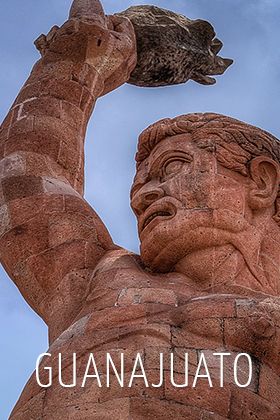
Explore our hotels listings and you will find unbelievable prices and promotions.
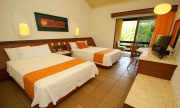
From: $70 USD

From: $60 USD

From: $48 USD

From: $90 USD

From: $71 USD

From: $65 USD

From: $29 USD

From: $8 USD
We're very social
Follow up the latest updates and news.
- Travel by Mexico on Facebook
- Travel by Mexico on Twitter
- Travel by Mexico on Google+
- Travel by Mexico on Youtube
- Travel by Mexico on Instagram

© Niciak/Getty Images/iStockphoto
Zona Arqueológica de Tula
Two kilometers north of Tula's center, ruins of the main ancient ceremonial site are perched on a hilltop. The highlight is standing atop a pyramid, virtually face-to-face with Toltec warrior statues, with views over rolling countryside (and the industrial sprawl nearby). Throughout the near-shadeless site, explanatory signs are in English, Spanish and Náhuatl. Near the main museum and the entrance to the site, you’ll find souvenir markets on the weekends. Both of the on-site museums are free with site admission.
The main site museum , displaying ceramics, metalwork, jewelry and large sculptures, is near the entrance, at the north side of the zona from downtown on Calle Tollan. Outside the museum is a small, well-signed (in Spanish) cacti garden.
From the museum, the first large structure you’ll reach is the Juego de Pelota No 1 (Ball Court No 1). Archaeologists believe its walls were decorated with sculpted panels that were removed under Aztec rule.
Climb to the top of Pirámide B , also known as the Temple of Quetzalcóatl or Tlahuizcalpantecuhtli (the Morning Star), to see up close the impressive remains of three columnar roof supports – which once depicted feathered serpents with their heads on the ground and their tails in the air. The four basalt warrior telamones (male figures used as supporting columns; known as 'Los Atlantes') at the top, and the four pillars behind, supported the temple’s roof. Wearing headdresses, breastplates shaped like butterflies and short skirts held in place by sun disks, the warriors hold spear throwers in their right hand and knives and incense bags in their left. The telamon on the left side is a replica of the original, now in Mexico City’s Museo Nacional de Antropología. The columns behind the telamones depict crocodile heads (which symbolize the Earth), warriors, symbols of warrior orders, weapons and Quetzalcóatl’s head.
On the pyramid’s north wall are some of the carvings that once surrounded the structure. These show the symbols of the warrior orders: jaguars, coyotes, eagles eating hearts, and what may be a human head in Quetzalcóatl’s mouth.
Now roofless, the Gran Vestíbulo (Great Vestibule) extends along the front of the pyramid, facing the plaza. The stone bench carved with warriors originally ran the length of the hall, possibly to seat priests and nobles observing ceremonies in the plaza.
Near the north side of Pirámide B is the Coatepantli (Serpent Wall), which is 40m long, 2.25m high and carved with geometric patterns and a row of snakes devouring human skeletons. Traces remain of the original bright colors with which most of Tula’s structures were painted.
Immediately west of Pirámide B, the Palacio Quemado (Burned Palace) is a series of halls and courtyards with more low benches and relief carvings, one depicting a procession of nobles. It was probably used for ceremonies or reunion meetings.
On the far side of the plaza is a path leading to the Sala de Orientación Guadalupe Mastache , a small museum named after one of the archaeologists who pioneered excavations here. It includes large items taken from the site, including the huge feet of caryatids (female figures used as supporting columns) and a visual representation of how the site might have looked in its prime.
Carretera Tula–Iturbe Km 2
Get In Touch
773-100-36-54
https://www.centrohidalgo.inah.gob.mx/
Lonely Planet's must-see attractions

Museo Nacional del Virreinato
25.35 MILES
There’s a very simple reason to visit this wonderful, expansive museum comprising the restored Jesuit Iglesia de San Francisco Javier and an adjacent…

Catedral de San José de Tula
Tula’s fortress-like cathedral, just off the zócalo, was part of the 16th-century monastery of San José. Inside, its vault ribs are decorated in gold.
Nearby attractions
1 . Catedral de San José de Tula
2 . Museo Nacional del Virreinato
Off the Beaten Path in Tula, Mexico
What is tula.
” Tula was one of the most important cities of ancient Mexico. It had a long life of more than four centuries. In the year 1000 A.D. it was a metropolis with tens of thousands of inhabitants, spread out over an area of almost 16 km. There were plazas, pyramids, palaces, vast complexes of artificial terraces, canal systems, drainage systems, streets, boulevards, and bridges over the Tula River, which allowed for transit between neighborhoods of both parts of the city.” – Sign at the site of the Atlantean figures (pictured above)
How I Discovered Tula
I first found out about Tula de Allende through the travel blog Final Transit . This place is definitely off of the beaten path and definitely a must see if you are in the vicinity of Mexico City. It is a city in the municipality of Hidalgo, which is located 50 km. (about 2 hours) northwest of Mexico City.
What to do?
- Visit the Zona Arqueologica de Tula and see the Atlantean figures , which were built during the Toltec empire.
- Visit the Catedral de Tula , walk around the grounds and sit down and rest with the locals.
- Buy some concha (a sweet baked bread) from the lady near the Catedral or be adventurous and try some maguey worms (Chinicuiles) near the bus terminal.
- Walk around the Zocalo
Getting There:
Take the Ovnibus from Terminal Central de Norte in Mexico City directly to the city of Tula.
Important Note for Visitors:
The Zona Arqueologica is open seven days a week from 9 am – 5pm. You MUST arrive two hours before it closes in order to gain entry to the site. The best time to go however is at 9:00 am when they open. It is cool and there are no crowds.
Tula in Photos:

Pictured above are the famous Toltec Atlantean figures that Tula is known for. Each statue is 4.6 meters tall.

This is the Tula Cathedral (Catedral de Tula), which was constructed in the 16th century by the Franciscans. It is located in the center of the city and it is the ex-convent of San José. For more information, visit PasatiempoEnBlog .

The Resurrection of Christ (pictured above) is one of the main paintings in the Tula Cathedral and it sits directly behind the altar .

Here I am eating Chinicuiles (Maguey worms) at a local hole-in-the-wall restaurant. According to Hidalgo Travel , these bad boys are a delicacy that come from underneath maguey (agave) plants. They are seasoned to enjoy as a snack and sometimes they are cooked in butter or olive oil to enjoy inside of tacos.
Have you ever ventured off-the-beaten-path to Tula before? What did you do?
Share this:
Hey Chanel, great post, looks like you had a great time in the town and the ruins. Thanks for the linkback! Happy travelling!
Yes I did! Thanks for stopping by and reading 😀
Leave A Comment Cancel reply
This site uses Akismet to reduce spam. Learn how your comment data is processed .

Get to know Tula
Find your favorite destination and explore its charms
See more content
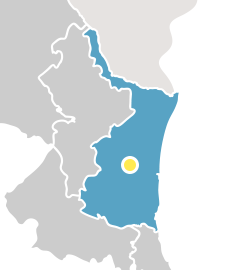
MÉXICO ESTA ESPERANDOTE
- Restaurants
Subscribe to our newsletter

Sign in and get benefits
Sign up here.
Tula Tourism
- Things To Do in Tula
- Tula Itineraries
- Tula Hotels
Exclusive Tula Travel Guide, Mexico
- North America
Tula is a Mesoamerican archeological site, which was an important regional center which reached its height as the capital of the Toltec Empire between the fall of Teotihuacan and the rise of Tenochtitlan. It has not been well studied in comparison to these other two sites, and disputes remain as to its political system, area of influence and its relations with contemporary Mesoamerican cities, especially with Chichen Itza. The site is located in the city of Tula de Allende in the Tula Valley, in what is now the southwest of the Mexican state of Hidalgo, northwest of Mexico City. The archeological site consists of a museum, remains of an earlier settlement called Tula Chico as well as the main ceremonial site called Tula Grande. The main attraction is the Pyramid of Quetzalcoatl which is topped by four, four metre high basalt columns carved in the shape of Toltec warriors. Tula fell around 1150, but it had significant influence in the following Aztec Empire, with its history written about heavily in myth. The feathered serpent god Quetzalcoatl is linked to this city, whose worship was widespread from central Mexico to Central America at the time the Spanish arrived.
A place in Mexico, Tula is an interesting place to visit, given its unique culture, history and character. Tula is located at a short trip away from Mexico City a major city in Mexico. Mexico City is bestowed with interesting set of attractions like Muse De Templo Mayor , Chapultepec Castle , Zocalo . To explore Tula, set aside 1 to 2 number of your days. You'll be coming back for more!
Tula is an affair to remember, follow this apt itinerary of the place and return home with a bunch of memories.
Tula Trip Planner
Plan your customized day by day trip plan for Tula. Choose from various experinces categories as adventure, romantic and family and kids friendly for your trip using using Tula trip planner.
- THINGS TO DO
- HOW TO REACH
- TOP RESTAURANTS
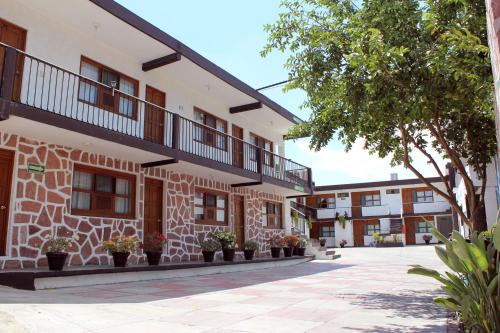
- Mexico City Trip Planner
- Cuernavaca Trip Planner
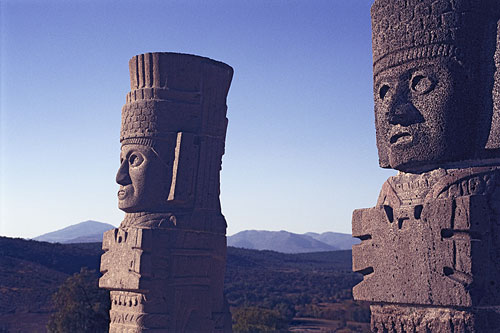
Towards the end of the Classic period (after the decline of the great city of Teotihuacan around 700 AD), various waves of indigenous invaders migrated from the north into Mesoamerica. Of these numerous groups, the most important were the Toltec people. The Toltecs mixed with people already living in the valleys of the present-day state of Hidalgo. Around the year 1050 they developed their city of Tollán into the capital of an empire which came to dominate the center of Mexico and spread its influence to distant areas. The Toltec emergence is thought to mark the rise of militarism in Mesoamerica, as their armies used superior force to dominate other societies in the region.
The city of Tollán, the legendary Toltec capital, is mentioned in a number of Post-Conquest sources, including Sahagún's (General History of the Things of New Spain ) as well as in indigenous documents known as códices. The Aztecs told the early Spanish missionaries of a city called Tollán where the Toltecs had once lived:
"And there was a hill called Tzatzitepetl. It is also just so named today. ... And there dwelt all varieties of birds of precious feather: the lovely cotinga, the resplendent trogon, the touripal, the roseate spoonbill." (Florentine Codex, pg 12).
An examination of the written sources and legends of the Aztecs revealed that they were clearly aware of Teotihuacan, another great ruined city, and did not consider this to be the capital of the Toltecs. When questioned on the subject, they indicated the location of another ancient city far to the northwest of their own capital of Tenochititlan. This ruined city was said to be on the hill of Tzatzitepetl, where the Aztecs themselves had excavated the pyramids in search of the riches of the Toltec kings. In 1940, archaeologist Jorge Acosta conducted excavations of the Cerro del Tesoro near the village of Tula de Allende (about 64 kilometers or 40 miles north of Mexico City), and discovered the architectural remains of the former city of Tollán (now called Tula).
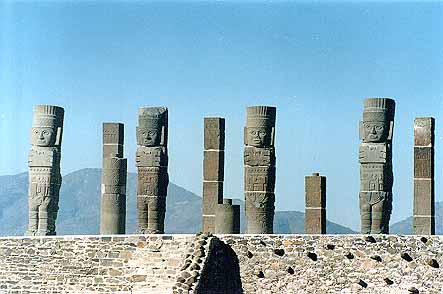
The Toltecs were a Nahuatl speaking people and their name has many meanings such as ‘urbanite,’ a ‘cultured’ person, and the ‘reed people,’ derived from their urban center, Tollán (‘Place of the Reeds’). Tula was the major city of the Toltecs and according to legend had been founded by the mythological figure Quetzalcoatl (the Plumed Serpent), an ancient deity which the Toltecs had adopted from earlier cultures and worshiped as the god of Venus. The ruins of the archaeological site are concentrated in two clusters at opposite ends of a low ridge. Recent surveys indicate that the original urban area covered at least three square miles. The ruins include the remains of a palace, two ball courts and three temples shaped like truncated pyramids. The largest of the pyramid temples, which is surmounted by 15 foot (4.6 meter) columns in the form of stylized human figures, is thought to be dedicated to Quetzalcoatl. This pyramid has been restored and the tall statues, called Atlanteans (Los Atlantes), have been erected on its summit. Though small, the pyramid was highly decorated. The sides of the five terraces were covered with sculptured and painted friezes of felines, birds of prey devouring human hearts, and human faces extending from the jaws of serpents. A stairway on the southern side led to a highly ornamented, two-room temple at the summit. A distinctive feature of the pyramid’s base are its walls covered with slabs of volcanic tuff, with bas-reliefs of jaguars and coyotes participating in a sacred procession. Other slabs display eagles and vultures devouring human hearts, the principal feature being a supernatural being, probably Quetzalcóatl himself, emerging from a fantastic animal that is a combination of jaguar, serpent and eagle. Between the reconstructed ball courts sits the Templo Quemado, or Burned Palace. Its dozens of ruined columns delineate what was once probably an important governmental building. Directly to the east is the restored Templo de Tlahuizcalpantecuhtli, or Temple of the Morning Star.
At the height of its splendor, Tula had around 50,000 inhabitants who practiced agriculture by means of small systems of dams and canals, since rain was scarce in the area. During the reign of Quetzalcóatl, it was said that Tula’s fertile land produced abundant harvests and the city was visited by merchants bearing valuable materials such as cacao, precious metals, jaguar hide, jade and ceramics from Chiapas and Guatemala. The artisans of Tula were themselves famous for producing some of the most beautiful objects in Mesoamerica, especially those made of the volcanic glass obsidian. Tula also traded with the Mayan city of Chichén Itzá and many Toltec building influences may be found there.
Indigenous historians and Spanish chroniclers frequently mentioned the character named Quetzalcóatl (meaning beautiful or plumed serpent). Myths describe Quetzalcoatl as the priest-king of Tula and that he never offered human victims, only snakes, birds and butterflies. According to one legend, a rival Toltec deity named Tezcatlipoca (the god of the night sky), drove Quetzalcoatl and his followers out of Tula around 1000 AD. Quezalcoatl then wandered to the coast of the "divine water" (the Atlantic Ocean), where he burned himself on a pyre, later emerging as the planet Venus. According to another version, he embarked upon a raft made of snakes and disappeared beyond the eastern horizon. The Central Mexican written accounts such as the "Legend of the Suns" also mention Quetzalcoatl departing for the Mysterious East at about the same time (948 AD).
The legend of the victory of Tezcatlipoca over the Feathered Serpent probably reflects historical fact. The first century of the Toltec civilization was dominated by the Teotihuacan culture, with its ideals of priestly rule and peaceful behavior. The pressure of the northern immigrants brought about a social and religious revolution, with a military ruling class seizing power from the priests. Quetzalcoat’s defeat symbolized the downfall of the Classic theocracy. His sea voyage to the east may also be connected with the invasion of Yucatan by the Itza tribe. Quetzalcoatl's calendar name was Ce Acatl (One Reed). The belief that he would return from the east in a One Reed year later led the Aztec sovereign Montezuma II to regard the Spanish conqueror Hernan Cortez and his soldiers as divine envoys, because 1519, the year in which they landed on the Mexican Gulf coast, was a One Reed year.
It would seem that Tula ended in a way similar to Teotihuacan. Around the year 1170, the city and its ceremonial center were ransacked and partially destroyed. The Toltec civilization declined in the 12th century as the Chitimecs and other tribes invaded the central valley and eventually sacked Tula. Much of the great city was later destroyed by the Aztecs.
Besides continuing restoration within the ceremonial precinct, archaeologists have explored outlying residential areas. Architectural and stylistic correspondences between Tula and several Mayan centers on the north Yucatán peninsula, primarily at the site of Chichén Itzá, indicate that Toltec influence pervaded the area. This influence is believed to stem from splinter groups of Toltec who migrated into the Mayan region and established hegemony in the early Post-Classic period (900-1200 AD).
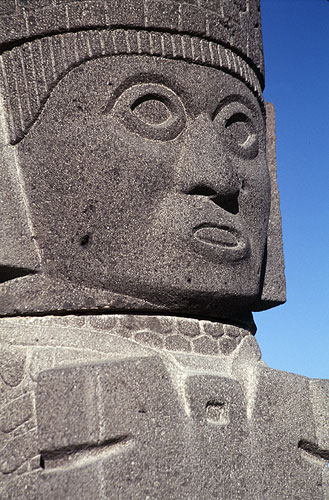
Mexico Travel Guides
Martin recommends these travel guides

- Global Sacred Sites List
- Introduction to Sacred Places
- New and Updated
- South Africa
- Dom. Republic
- United States
- Afghanistan
- North Korea
- Philippines
- South Korea
- Turkmenistan
- Netherlands
- Switzerland
- Saudi Arabia

Guide to visit Tula archeological site
How to arrive to Tula, Hidalgo. How to get to the archaeological site. Visiting the Atlantes a majestic jewel in Hidalgo, México.
When I was a little girl, a famous brand of sweet breads distributed a stamp album. The topic of this album was the pre-Hispanic civilizations . So there we were all: eating snacks to win a stamp about the Teotihuacan or about the Monte Alban (es) site. There were also vessels from the zapotecas civilizations, etc. But there was an image that stayed engraved in my memory. It was the image of some giant stone warriors . These warriors were the Atlantes of Tula . On this article we will show you what can you see when you visit Tula archeological site.
How to get to Tula archeological site?
Information to visit the tula archeological site, site museum, before the visit, the shops, ballcourt 1, wall of snakes or coatepantli, b pyramid and the atlantes, ballcourt 2, getting out of tula, visiting a bit of tula hidalgo, the stamps album.
Our visit to Tula was nothing of chance , I came to make true the image from my childhood stamp album. I came to see these warriors with my own eyes.
Check it out: Travel to Mexico, travel tips and itinerary
Being in Mexico City , we went to the bus station to go to Tula de Allende . We took the subway, everything fine. We arrived at the bus station… but, wait:
Why aren’t there any bus going to Tula? the answer was easy: we were at the SOUTH bus terminal. Routes to Tula left from the NORTH terminal.
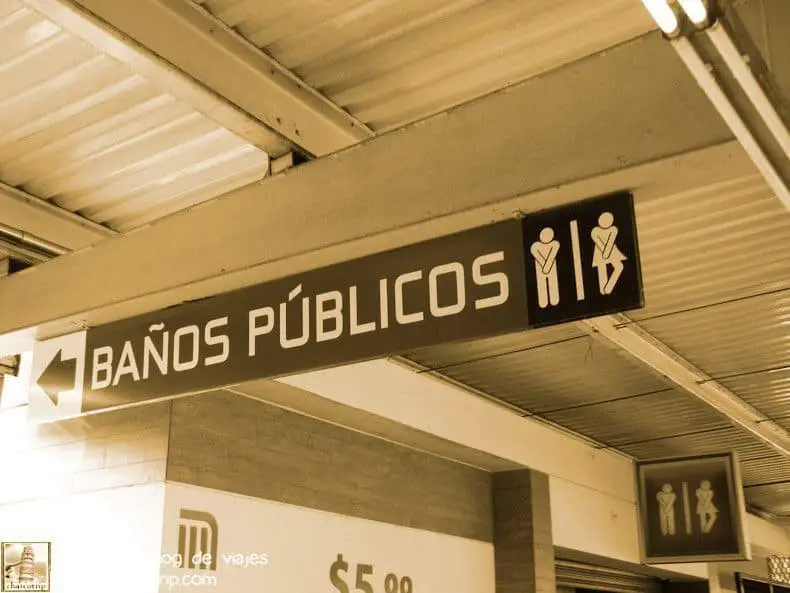
Ok, I had majestically mistaken North for South :( grumbling and conscious of the huge waste of time, we took the subway once again to cross (now from South to North) the whole city.
Arriving at the correct terminal – the North one – we go and buy happily our tickets for the next bus going to Tula. Oh no, wait, why are there so many people there? Is it here the sell the tickets for Tula? Yes, there it is :( ok, now we have to wait a while in the queue. I didn’t even want to think in the waste of time we already had, when at last we arrived at the platform.
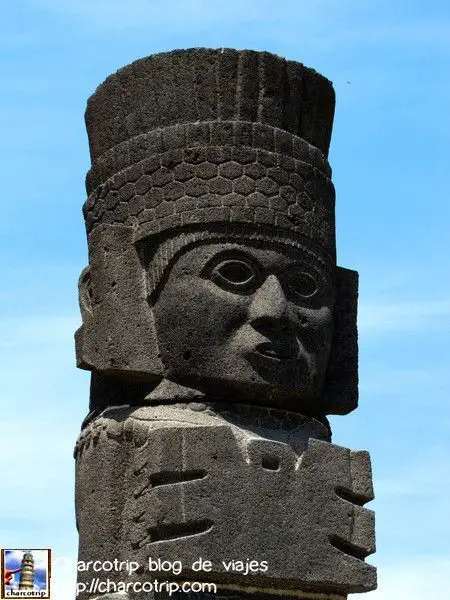
After a while, we arrived at the city of Tula de Allende. First thing, we looked for a shop to buy food, since as we lost so many time we’d be hungry real soon. In the shop, we asked where to get the small bus to get to the Tula archeological site, which the lady kindly told us. We walked a few blocks and the bus stop, we asked which one would drive us where we wanted, and ready, for a few pesos we arrived at our destination. Before entering, we sat on a bench outside, under some trees that provided us a wonderful shade, and we ate our snacks. Meanwhile, I met a cute Tula squirrel .

How much is it? 65 pesos (approx. 3 US dollars) * 2020 updated price *
Opening hours : from 9:00 AM till 5:00 PM
Can I take pictures? Yes. But to record videos, one has to pay an additionnal 45 pesos.
Get your flight to Mexico at the best price
Our visit to the archeological site
Once inside the site, there are few opportunities to be in the shadows. That’s when I was glad I had taken my umbrella, even though it was a pain to take during the flight, since it can’t be folded. So here’s my tip: don’t forget to take cap or an umbrella .
Once the ticket was paid, the first visit is the site museum . Just like in Xochicalco (es) , it seemed right to me to visit the museum first. It allows us to put context on what we’ll see, the era when it existed, why did the city disappear, etc.
This site belonged to the Toltec civilization which had Tula as a capital. This city was funded in the early tenth century, just after the destruction of Teotihuacan. During two centuries, it existed in great heyday, but the decline arrived for various factors, one of them being the mexica invasion. During this decline, the site was looted. The people had no option but fleeing.

Once out of the museum I was really enthusiatic, I was closer and closer of making real my childhood stamps album. Bt before that we had to walk for about 1 km inside the site. On the way, we met all the souvenirs shops and so on . Noticeable fact: when leaving the site, we did not came that way, so if you want to buy souvenirs, that’s when you have to do it.
Now yes, once we reached the site map, we started the visit the majestic Tula archeological site .

The first thing we met was a ballcourt (the first one, since we’ll see other on our way). On the explanation panel was told that the inside of the place had to be decorated with carvings on cut stones, but the site was looted by the Aztecs. It also said that in the southwest corner it is still possible to view part of the carving on a ceremonial stone, though only the player’s feet are recognizable. I must admit I couldn’t find it. It also said it’s the smallest ballcourt excavated. Sure, you’ll see the other one.
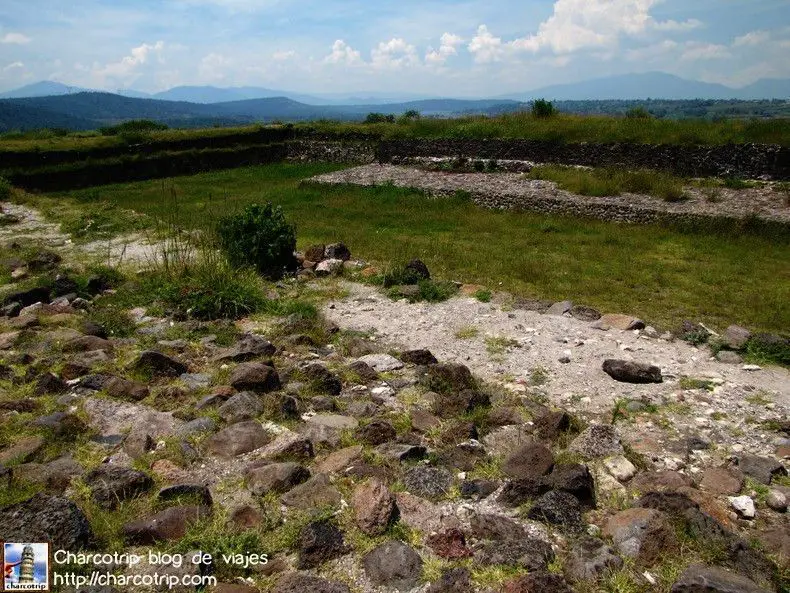
We reached a zone where we could hide a bit from the sun and admire what was the Coatepantli where we could see various sculptured figures on the walls. Some figures show human skeletons devoured by enormous rattlesnakes; these reliefs are related to human sacrifices. Moreover, the stepped fret, sculptured on the sides of the serpents and skeletons (first picture), have a certain mixtec influence and remind on of the Mitla mosaics (es) , in the valley of Oaxaca.
Another detail of importance, is that en some places one can still see the original colors that were painted on the walls. Blue is overwhelming, that same blue I like so much :D

As we continue on our way, we met the Burnt Palace . Right now, the only thing you can see is an accumulation of pillars upon some of which you can see the traces of the fire they suffered.
And we arrive at the main course of the site. What they named the Pyramid B , note that they couldn’t yet determine the names so they had to call them B, C, etc.
Stepping up the staircase, here they were, facing me, those stone warriors, the Atlantes of Tula , how happy was I! An interesting fact we learn being there is that those huge warriors were not to be seen by the people, because they served as pillars for the roof of the temple that was there. After that, we imagine that surely if it was a temple, the common people could not access it, since we must remember that these types of places were reserved only for the upper class and priests.
But after centuries, at last they can be seen by us, the ordinary people. Furthermore, we even met a cute dog at the foot of the pyramid.
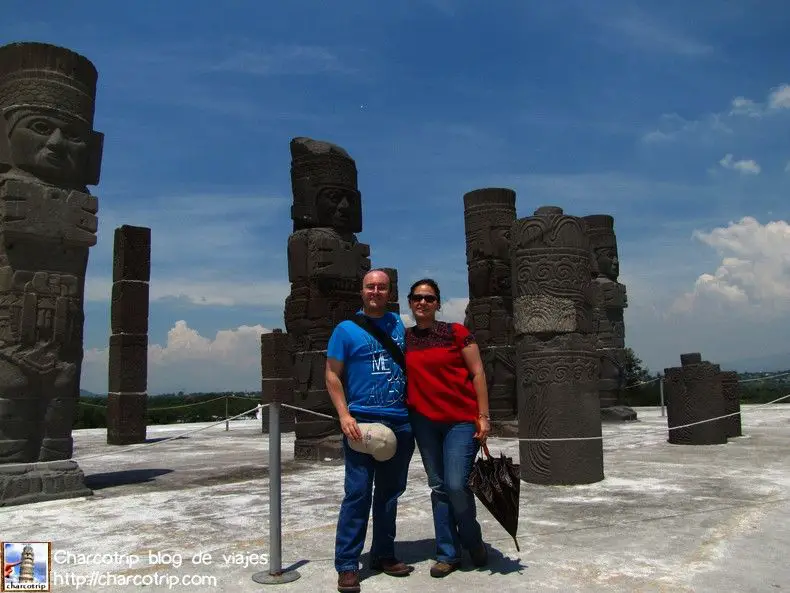
Thanks to the explanation panels there, we also saw that those Toltec warriors had butterfly-shaped pecs (somehow abstract, I couldn’t have told it was a butterfly just seeing it), fine feather helmets, mirrors of turquoise mosaics, knives and other weapons. They were figuring high-rank militars.

We went quite far from the Pyramid B, to reach a small mound telling us where es the Pyramid C (though this one can’t be climbed up). But neither had it much to be seen.

And we got the the second ballcourt. Much bigger than the fist one. On the panel, we’re todl that this one is very similar to the big ballcourt of Chichen Itza , Yucatan, though we couldn’t bear out since we hadn’t yet been there.
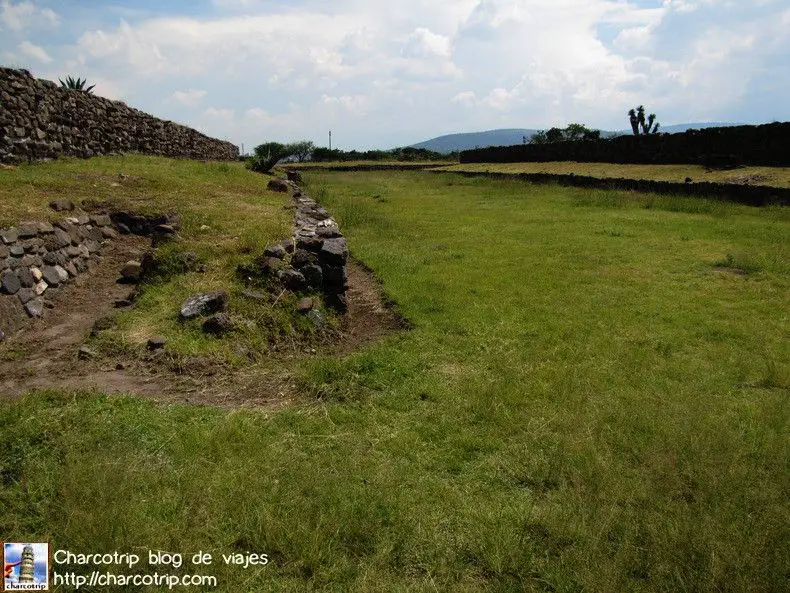
From there we followed the map, supposedly we had to reach a colonial chapel. But after walking quite a lot, we got to a ruined wall. the walkway was nice and there were a lot of butterflies, but we always had to be careful not to cross a much less pleasant animal (like a snake, for instance).
And we reached the exit booth, which is quite far from the entrance booth. We had no idea about how to get back to the center of Tula, by chance there was a guard at the gate that told us how to get there. After much hesitation, we trusted him.

And that was our travel to get to the center of Tula, finally it was not that far and we saw many colored houses. We even went into a grocery store in which I bought an Atlante miniature. :)
Once in the center, we gave a quick visit to the church and from there to the bus terminal to get back to Mexico City.

Before ending this post, here goes the stamp album I talked to you about all along. It came out in 1989, when I was 9, and you had to buy sweet bread of a famous brand to collect all the stamps from the album. ;)
Unexpectedly, the album was quite a hit. We kids were looking for stamps to fulfill it and in the same time learning about our history in a funny way. Thanks to it, I’ve had since a long time a big curiosity to visit the archaeological sites of my country and of the whole world.

Some of the links in this article include affiliate links. This means that if you buy a product listed here by following these links, we'll receive a commission. The use of this link does not increase the final price for you and thus helps us to keep our blog alive.
Olga Grijalva
Olga is a traveler and travel content creator with 17 years of experience. Her goal is to share useful information to help you plan your adventures. She has visited more than 40 countries and is excited to share her experience with you.
Related posts
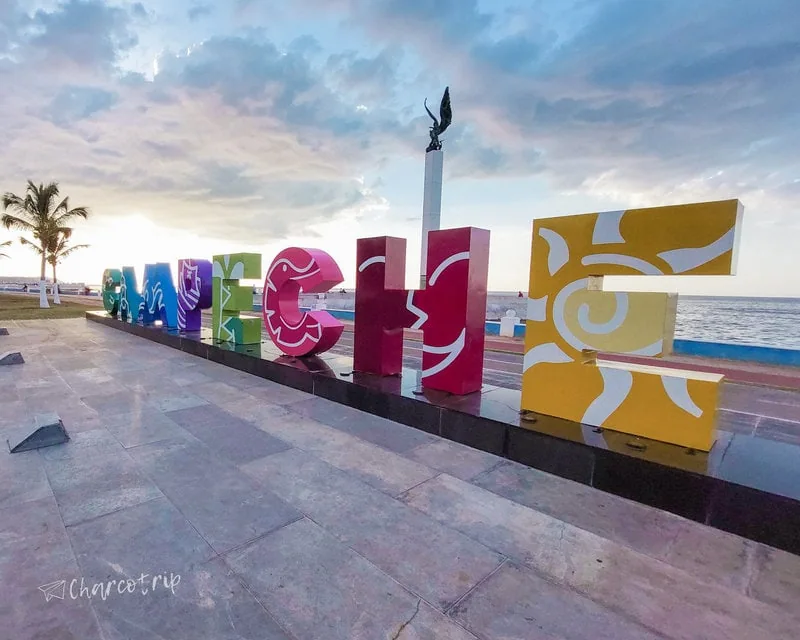
How to get to Campeche, Mexico? (by plane, bus, car)
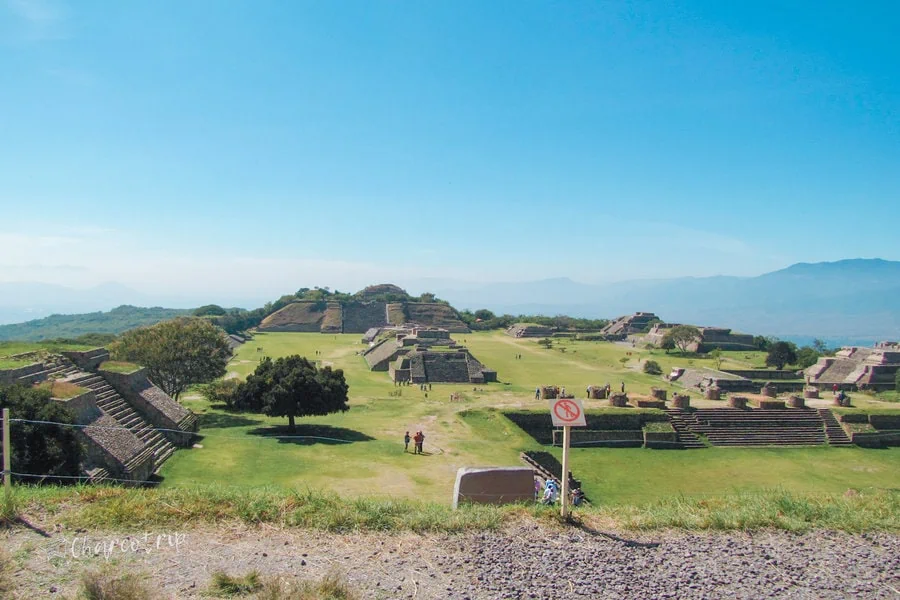
Monte Alban in Oaxaca, how to get there? How much is it?
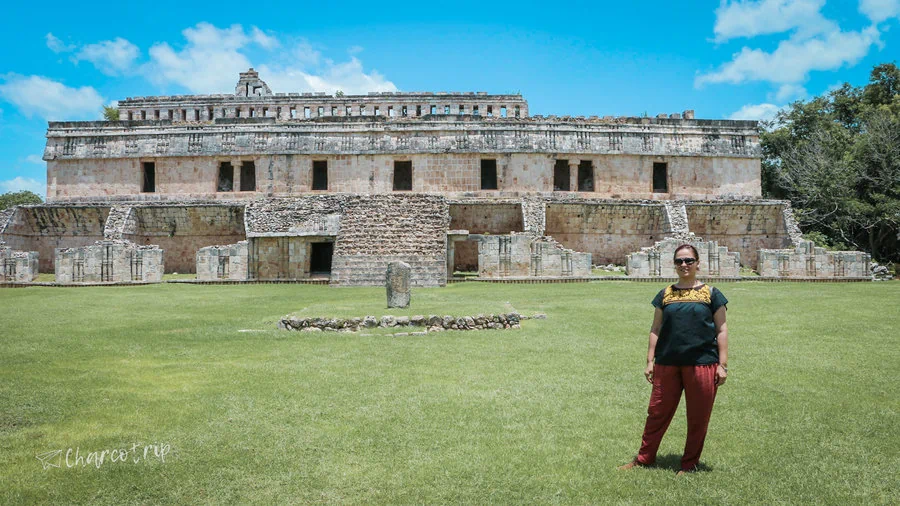
Kabah Mayan ruins, how to visit this archaeological site?

Change location
- UK / International
- Call toll-free tomorrow from 9am EDT
- 617-223-4970 or
- REQUEST A QUOTE
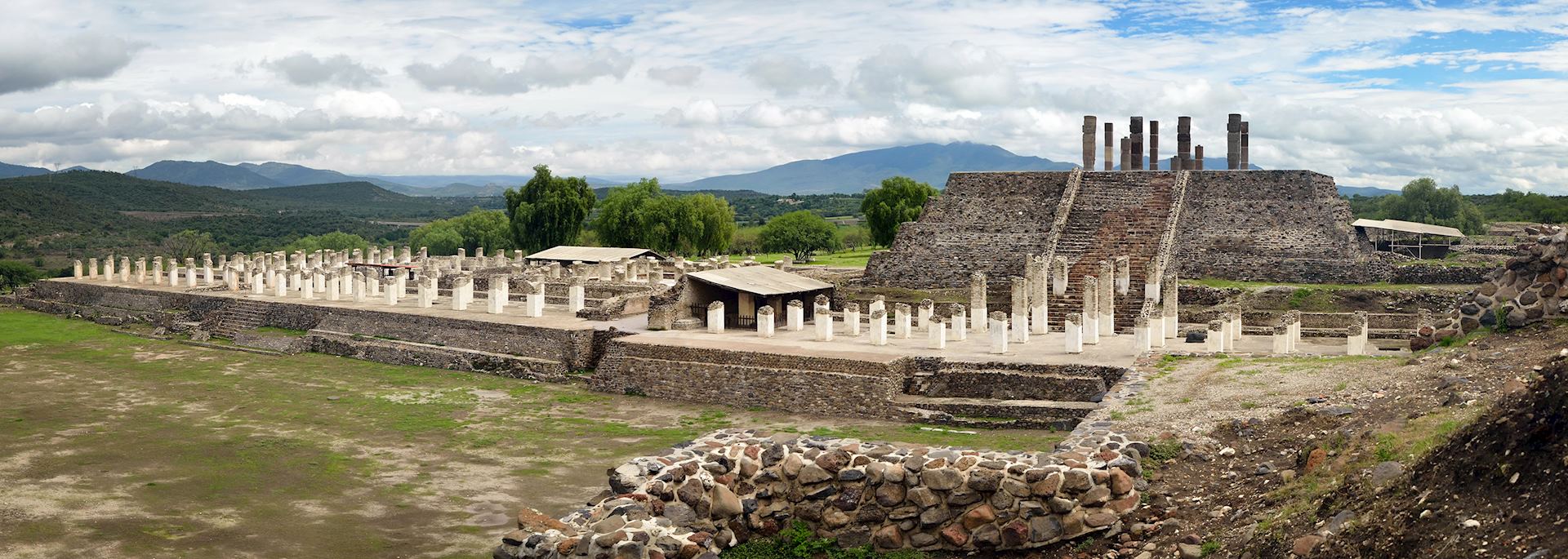
Tula & Tepotzotlan Tour
Tula is a town in the southwestern part of the state of Hidalgo and nearby are the remains of the ancient capital city of the Toltecs, also known as "Tula" or as "Tollan". Usually identified as the Toltec capital around 980 CE, the city was destroyed at some time between 1168 and 1179.
The tour continues from Tula to Tepotzotlan, which is a beautiful city containing much of Mexico’s religious art. Here, you visit the church of Saint Francisco Xavier, known for its gold plated coverings and stunning decoration.
Depending on the time, you may also have a chance to see the museum of religious art located in Tepotzotlan.

Start planning your tailor-made trip by contacting one of our Mexico specialists
- 617-223-4970
- Make an inquiry
Other experiences in Mexico City
These activities are designed to give you the most authentic experiences around where you're staying. We work with local guides, who use their knowledge and often a resident's eye to show you the main sights and more out-of-the-way attractions. Our specialists can suggest tours and activities that will introduce you to the local ways of life.

Mexico City Art Tour
Murals depicting Mexico's history make up the cornerstone of Mexican art. Explore this artistic cultural side to Mexico City: with visits to the Museo Casa Estudio Diego Rivera y Frida Kahlo in the San Angel area east of Chapultepec and then Museo Frida Kahlo the 'Blue House' in Coyoacan.
Experience it for yourself
You can enjoy this activity as part of the suggested tours below, or we can weave it into a trip shaped entirely around you.
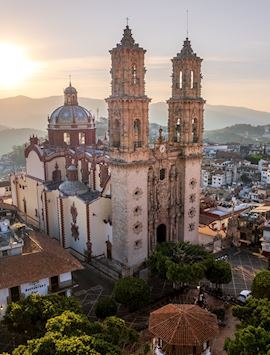
Historic Mexico & beach
12 days from CAD8,195pp

Classic Mexico tour
14 days from CAD8,285pp
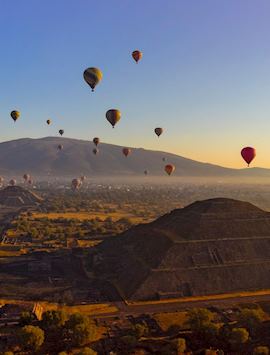
Self-drive Mexico: Baja California
14 days from CAD10,120pp
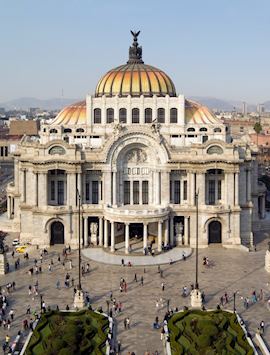
Culinary tour of Mexico
13 days from CAD8,260pp
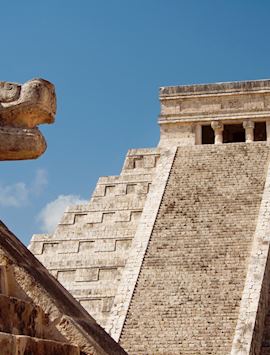
Highlights of Mexico: Mexico City, Mérida & Isla Holbox
11 days from CAD6,350pp

City break: 5 nights in Mexico City
6 days from CAD6,200pp
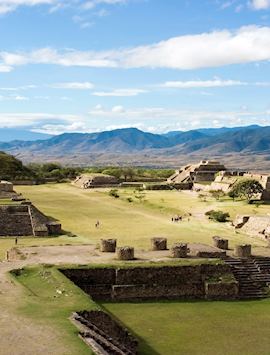
Cities & Culture: Mexico City, Puebla & Oaxaca
10 days from CAD7,295pp

Luxury Mexico tour
14 days from CAD12,105pp
- No Search data
- Western turkey
- 1. [AF1] southern african circuit
- 2. [NL1] newfoundland & labrador
- 3. [CA3] the five stans
- 4. [MCSP] south pacific explorer
- 5. [MCUP] untouched pacific islands
- 6. [MCWA] a west african odyssey
- 7. [GY1] guyana, suriname & french guiana
- 8. [AZ1] the caucasus
- 9. [EG3] classic egypt
- 10. [MCIO] indian ocean islands
- Top 10 Most Popular Destinations
- Discounted Tours
- January Tours
- February Tours
- March Tours
- April Tours
- August Tours
- September Tours
- October Tours
- November Tours
- Activity Level 1 Tours
- Activity Level 2 Tours
- Activity Level 3 Tours
- Cultural Tours
- Active Tours
- How We Travel
- Tour Styles
- Tour Leaders
- Our Partners
- Senior Tours
- e-Newsletter Archive
- Newsletter Subscribe
- Photo Contest
- Tour Safety
- Terms and Conditions
- Cancellation Policy
- Single Travellers
- Travel Insurance
- Frequently Asked Questions
- Passport and Visas
- Travel Tips
- Privacy Policy
- Tula Mexico - Mysterious Ancient City of the Toltecs
Mexico is a country of endless highlights. Luckily for us, we have one of our travellers - Dale of The Maritime Explorer - to explain his Mexico trip experiences in Tula, the mysterious city of the Toltecs.
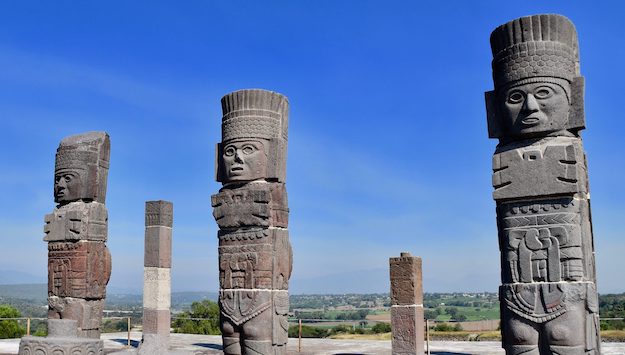
Our last stop was at Teotihuacan which more than lived up to its billing as one of the greatest pre-Columbian archaeological sites in the New World. Now we are about to explore a much less visited site that was once the capital city of the Toltec Empire which the Mexicas (aka Aztecs) greatly admired and claimed to emulate as much as possible.
The only trouble is that there is very little actual solid evidence about just who the Toltecs were and their relationship to other contemporary cultures, particularly the Mayans of Chichén Itzá. What little evidence there remains of the Toltecs can be found at Tula so I hope you’ll join us for this visit.
History of the Toltecs and Tula
The Toltecs are perhaps the most mysterious and unknowable of the pre-Columbian civilizations that came and went long before Cortés set foot on Mexican soil. The reason for this is that what we know of them comes largely from Mexica writings and oral history which is a bit weird because the Toltecs had disappeared before the Mexicas rose to power in Tenochtitlan, modern day Mexico City.
Despite not being contemporaries or even chronological successors, the Mexicas professed that the Toltecs had represented the epitome of civilization and that virtually everything they did was based on Toltec precedent.
They ascribed the whole Queztalcoatl thing which was so essential to their myths and religion, to the Toltecs. They believed the last king of the Toltecs was named Queztalcoatl.
The only problem with this is that the archaeological record does not support the idea that the Toltecs were some type of super race who did everything better than anyone before or after them. Quite the opposite is the case at Tula, the largest Toltec city was nowhere near as grand as either Teotihuacan which came before it and Tenochtitlan which came after.
That is not by any means to say that Tula is not worth visiting. It has some features that make it unique like the four giant basalt figures named the Atlanteans that stand atop the largest pyramid in Tula. Or the hundreds of square and round pillars that give it a marked similarity to the Mayan city of Chichén Itzá.
The reality seems to be that after Teotihuacan was destroyed or abandoned around 500-550 CE there was a power vacuum in the central Mexican highlands and for a period of about six hundred years the Toltecs filled that gap.
Tula actually consists of two distinct cities, Tula Chico, literally little Tula and Tula Grande which is the site we are visiting. Tula Chico came on the scene around 600 CE and was abandoned between 850 and 900 CE at which time Tula Grande began to develop and lasted until about 1150 CE when it too was either voluntary abandoned or destroyed by internal strife.
No one knows for sure which it was. Today, you can find Tula 75 kms.(47 miles) northwest of Mexico City in the state of Hidalgo.
Ordinarily your visit would start at the Museo Jorge R. Acosta named for the most prominent archaeologist who worked on excavating Tula. However, during our visit it was temporarily closed and this was all we got to see. However, I have confirmed that it will be reopened in time for the 2019 trip.
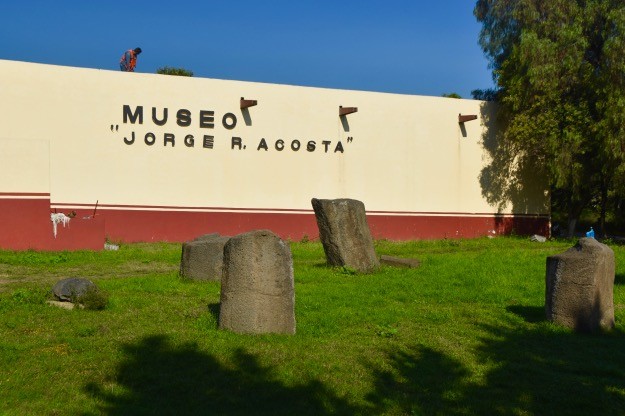
After paying the small entrance fee there is a very enjoyable walk to the site that features a variety of wildflowers and cacti. Little would you guess that a city as large as 80,000 people once thrived here.
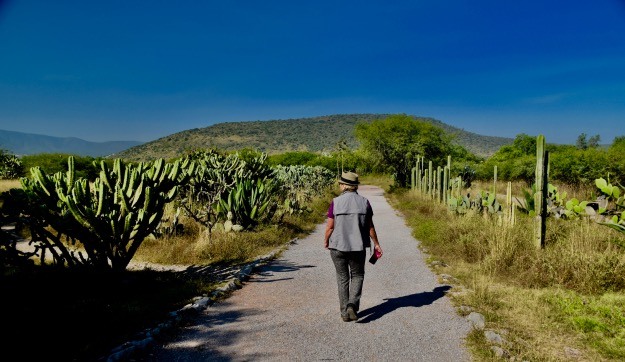
This is an agave plant putting up the one bloom it will make in its long lifetime after which it will die. Often mistakenly called a century plant in the belief that they do not bloom for a hundred years, most agaves bloom after 30-40 years. If you think this stalk looks like a giant asparagus you would be right as the two plants are closely related.
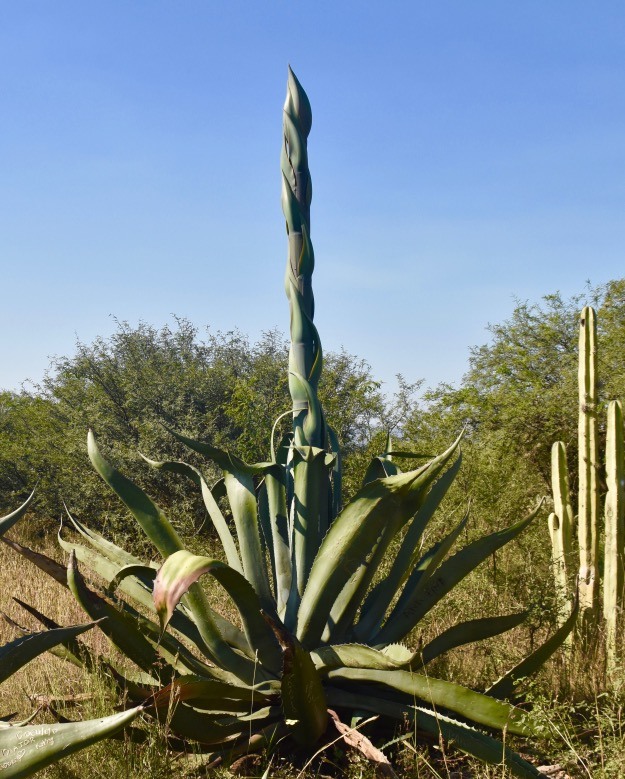
This is a barrel cactus with one tiny bloom surrounded by vicious looking thorns. You sure wouldn’t want to sit on this by accident!
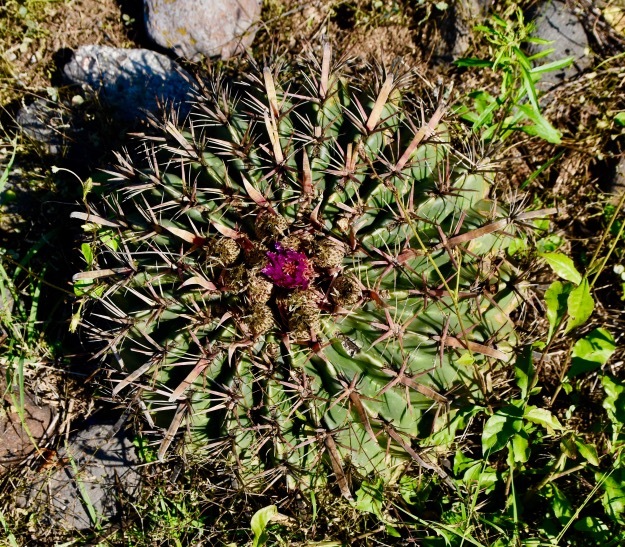
Lastly on this mini-horticultural tour heading to Tula we have this version of the poker plant, a member of the aloe family
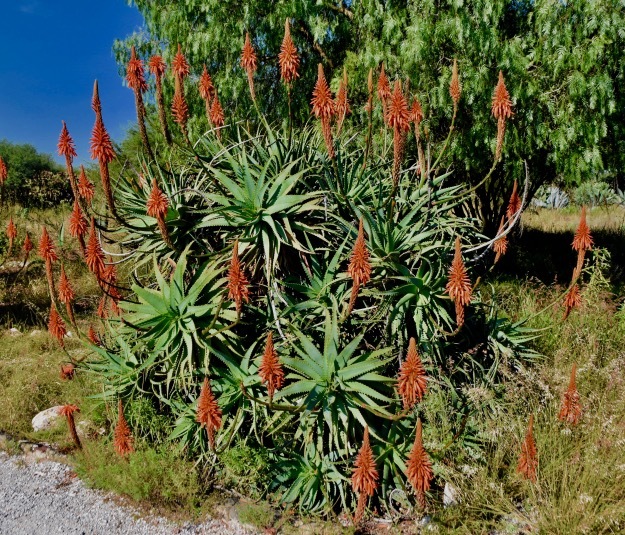
The one thing I was not expecting from Tula was to find one of the best preserved ball courts in Mexico, which is about the first thing you come upon at the site.
The Meso American ball game dates back to at least 1400 B.C. and was played by every Mexican pre-Columbian civilization from that time up until the coming of the Europeans. The space in between the sides would have been much deeper before centuries of erosion filled the interior with silt.
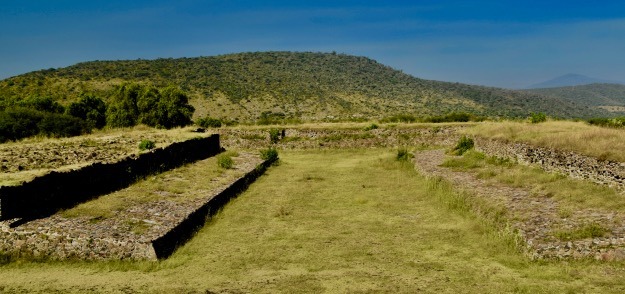
You often hear the expression, “It’s only a game.” when someone gets overheated after shanking a golf shot or having a dart bounce off the bullseye. You wouldn’t say that to any of the players or spectators at the ball game for it was a deadly serious business that sometimes saw the losers executed.
It could literally be a game of life and death. Standing here today looking at this relatively benign scene it is hard to imagine the noise and hysteria that took place here over a thousand years ago.
Tula is not known for it grand pyramids like Teotihuacan and Tenochtitlan, but it does have a few small ones like this that are pretty ant-climactic after you’ve visited the other two places.
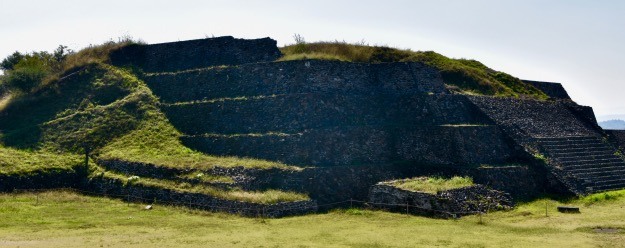
But were not here to see pyramids, but rather to view the hundreds of columns that make Tula almost a sister city of Chichén Itzá which is a chronological contemporary with Tula. Chichén Itzá was the first pre-Columbiam city I visited in Mexico some years before coming on this trip.
I was there to see the famous pyramid El Castillo and the observatory among other things, but what really surprised me was the presence of columns and pillars. After years of touring Greek, Roman and Egyptian archaeological sites (some with Victor) I just assumed that the use of columns and pillars to support a roof was a Western thing.
Chichén Itzá opened my eyes to the fact that these building techniques existed independently in Meso America and are not the product of the ‘Western mind’.
So I give you the columns and pillars of Tula. Just to clarify one small point – columns are always meant to be weight bearing structures while pillars may or may not be, at least according to architectural sources I have consulted. Unfortunately, someone forgot to tell the emperor Trajan that his column in Rome is actually a pillar.
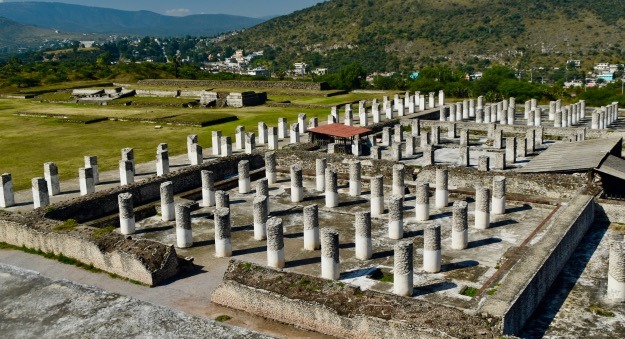
Like wise the circular columns which would have supported a wooden roof to what is believed to have been a former palace which was destroyed by fire near the end of Tula’s existence. In fact, this building is called the Burnt Palace.
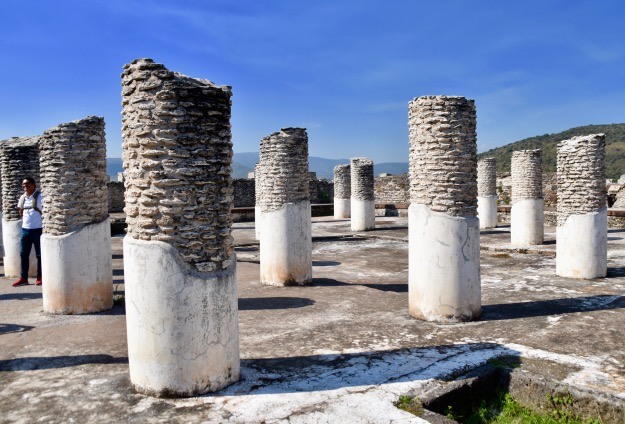
This is our group with our local guide surrounding the chacmool of Tula. As you can tell I’ve wandered off to the top of Pyramid B to get this shot.
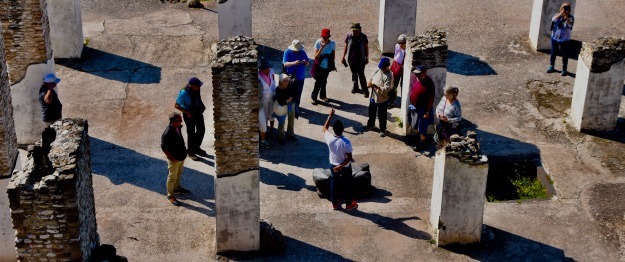
This is a closer look at the Tula chacmool which unfortunately has lost its head. Chacmools are found in central Mexico and the Yucatan and are associated with the rain god Tlaloc. Some kind of sacrifice would have been placed atop the ceremonial bowl the figure is holding. I’m not even going to guess what that might have been.
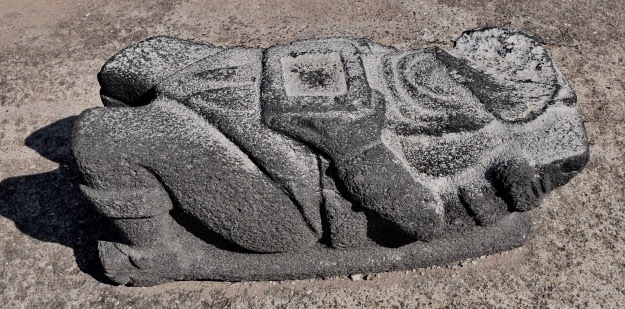
The Atlanteans
Now we get to the star attraction of Tula – Pyramid B with the four Atlanteans on top of it. I had to use this picture from the web which would have been taken from the top of Pyramid C to give the reader an idea of the quite unique look of this pyramid. We have seen no others with anything like this on top of them.
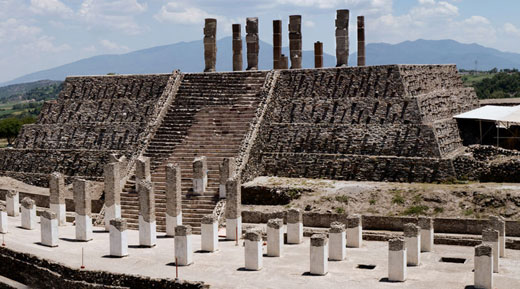
I also wanted to show how incredibly steep the stairs are that lead to the top. This is not a place for people with vertigo. Only about half our group went to the top and a few of them came down on their fannies because if you tripped it would be game over.
But what a sight once you make it to the top. Aside from getting a great look at the Burnt Palace from above you see the four Atlanteans standing solemnly and as mysterious a group of statues as you’ll find anywhere in the world.
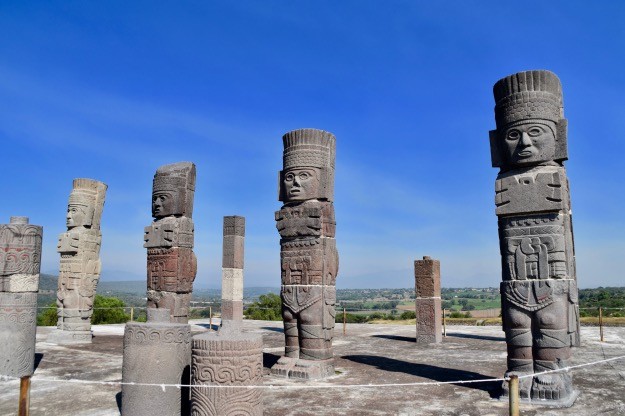
The Atlanteans are named not for Atlantis or the city in Georgia, but rather after the titan Atlas who was responsible for holding up the earth – he literally had the weight of the world on his shoulders.
These statues which are fifteen feet high once held up a roof of some sorts and so technically they are columns. There is no agreement as to their age which could be as early as 850 CE or as late as 1100 CE.
They are the best known Atlantean figures in Mexico, but others have been found at, no surprise, Chichén Itzá and in various parts of the Mexica (Aztec) empire.
Apparently these four statues had a tremendous influence on the Mexicas and are partly the reason the Mexicas believed the Toltecs to have been some sort of super race.
Let’s take a closer look at each Atlantean. As for as I can tell, they do not have individual names, but they are all slightly different, each representing a Toltec warrior in full battle dress.
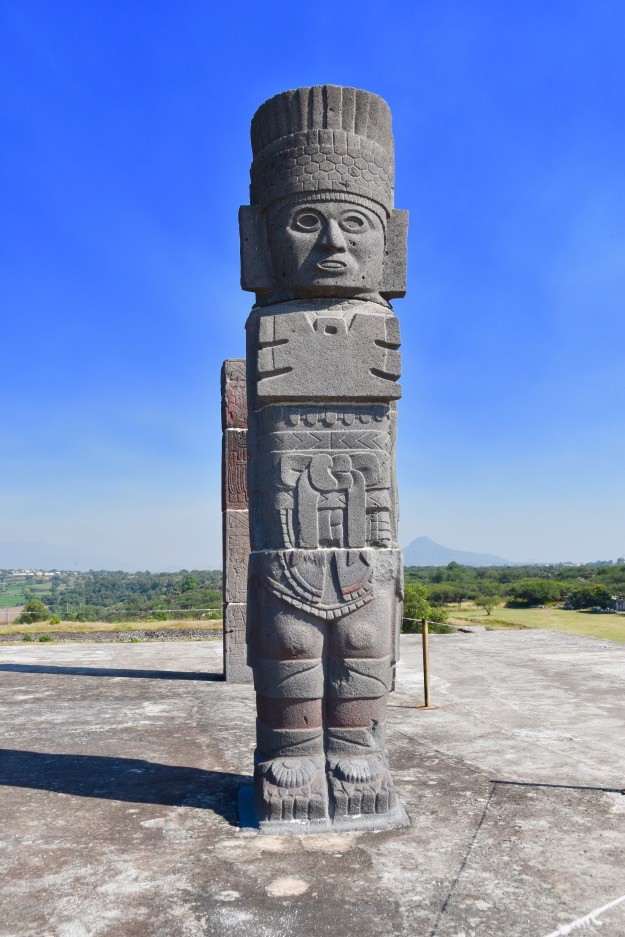
It is on their backsides that you see major differences. This is a Mayan calendar on the back of Atlantean 1 and confirms the close relationship between the Toltecs and the Mayans.
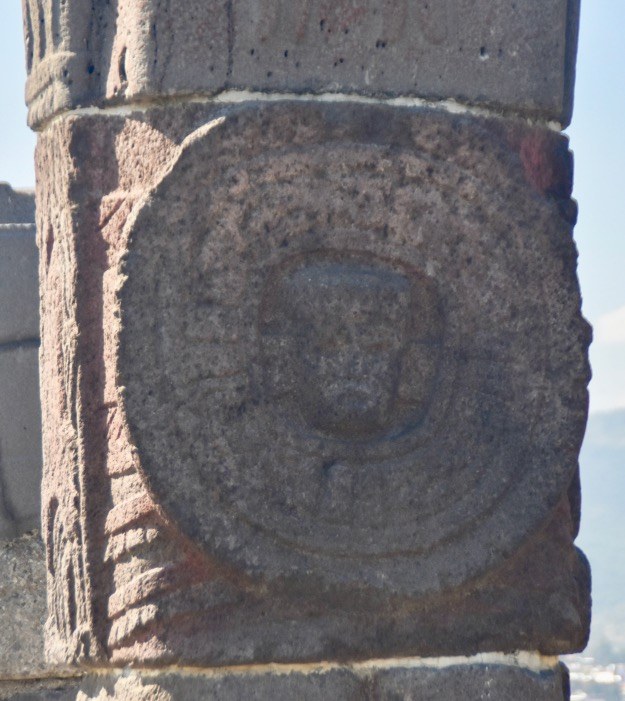
There are other more creepy practices associated with Tula such as this carving of serpents devouring skeletons.
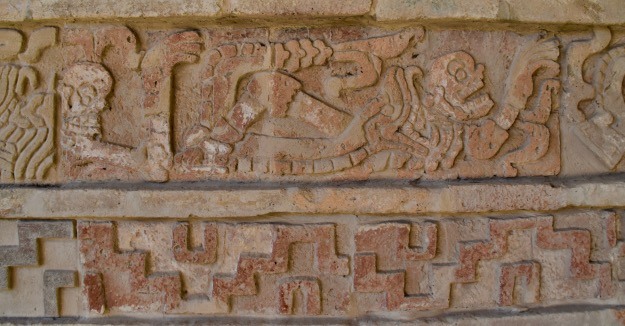
In reading the itinerary for this trip, one of things I most looked forward to was standing atop Pyramid B or more romantically, the House of the Morning Star, and seeing the Atlanteans gaze out over the high plains of central Mexico. Believe me, it was worth the somewhat scary climb to the top and the far more scarier descent and I have the photo to show we did it. You should get one too.
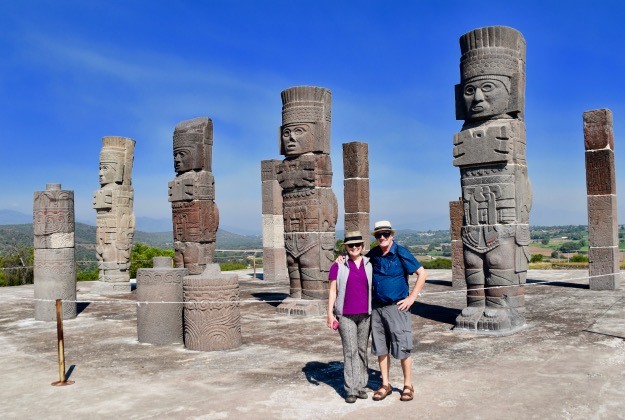
Next we venture to San Miguel Allende, a small colonial city considered to be among the most beautiful in Mexico and much favoured by Canadian expats and snowbirds.
Many thanks again to Dale of The Maritime Explorer for allowing us to share his wonderful insights.
Have a look at our Mexico sightseeing tours to experience this great country! Want to read more of our travel tales from Mexico? Check out these Mexico travel blog posts !

IMAGES
COMMENTS
What Tula lacks in size and grandeur, as at nearby Teotihuacán, it makes up for in charm and atmosphere. Although a relatively small archaeological site, it is situated on a hill overlooking the Tula Valley and the historic town of Tula de Allende (in the Central Mexican state of Hidalgo).The views of the archaeological sites and the surrounding area from the top of one of the pyramids, what ...
Getting a bus from Mexico City to the ruins of Tula is simple and straightforward: from Mexico City's Terminal Norte bus station, Ovnibus runs 1st class buses to Tula de Allende (1.5 hrs.) about once an hour for about 150 pesos each way. Also, AVM runs 2nd class buses for slightly less money (2 hrs.) every 15 minutes or so for 130 pesos.
Getting to Tula from Mexico City by Guided Tour. Another great way to visit the ruins of Tula is to book a guided tour from Mexico City. Guided tours of Tula from Mexico City typically include roundtrip transportation, a tour of the archaeological site, and a visit to the nearby Pueblo Magico, Tepotzotlan, the churrigueresque capital of Mexico.
Beautiful carvings, spectacular colossal statues and columns. Aug 2014 • Family. At an elevation of 2,020 meters (6,627 feet) in a desert landscape, the archaeological complex of Tula is located in the state of Hidalgo about 50 kilometers northwest of Mexico City.
Tula (Otomi: Mämeni) is a Mesoamerican archeological site, which was an important regional center which reached its height as the capital of the Toltec Empire between the fall of Teotihuacan and the rise of Tenochtitlan.It has not been well studied in comparison to these other two sites, and disputes remain as to its political system, area of influence and its relations with contemporary ...
From Mexico City to Tula de Allende by bus (2:30 hours) From Mexico City to Tula de Allende by taxi (1 hour) Tula archeological site on Google Map. ... Mexico Travel Routes. 15 day tour Mexico Colonial. 25 day tour around Yucatan Peninsula. 21 day travel trip through Baja California.
10. $ • Mexican. Frequently Asked Questions about Tula. Where should I stay in Tula? When is the cheapest time to visit Tula? Tula Tourism: Tripadvisor has 33 reviews of Tula Hotels, Attractions, and Restaurants making it your best Tula resource.
Tula Archaeological site. (773) 100 3654. Km. 2 Carretera Tula - Iturbe, Carretera Tula -Iturbe, Tula de Allende, Hgo.. 42900. 3. Monday through Sunday 09:00 am - 05:00 pm. Information. Tollan-Xicocotitlan, now known as the Archaeological Site of Tula, was the Toltec state capital and the most influential urban center in the central region.
Zona Arqueológica de Tula. Mexico, North America. Top choice. Two kilometers north of Tula's center, ruins of the main ancient ceremonial site are perched on a hilltop. The highlight is standing atop a pyramid, virtually face-to-face with Toltec warrior statues, with views over rolling countryside (and the industrial sprawl nearby).
Each statue is 4.6 meters tall. This is the Tula Cathedral (Catedral de Tula), which was constructed in the 16th century by the Franciscans. It is located in the center of the city and it is the ex-convent of San José. For more information, visit PasatiempoEnBlog. The Resurrection of Christ (pictured above) is one of the main paintings in the ...
Tula, Mexico. Tula, an ancient Mexican city, 850 ce. Tula, ancient capital of the Toltecs in Mexico, it was primarily important from approximately 850 to 1150 ce. Although its exact location is not certain, an archaeological site near the contemporary town of Tula in Hidalgo state has been the persistent choice of historians.
Get to know Tula. The oldest city in Tamaulipas state is a 400 years history charming Pueblo Mágico (Magical Town). Founded in 1617 on the Cerro La Cruz southern slope by the Spanish friar Juan Bautista de Mollinedo, Tula is about 145 kilometers from Ciudad Victoria, state capital. The charming Tula's colonial airs Historic Center offers ...
Tula was one of the most important cities of Ancient Mexico and reached its height as the capital of the Toltec Empire. It was inhabited for over 4 centuries. In the year 1000 A.D. it was a metropolis with tens of thousands of inhabitants, spread out over almost 16km². 'The large main plaza with enormous platforms, stairways altars, halls ...
A place in Mexico, Tula is an interesting place to visit, given its unique culture, history and character. Tula is located at a short trip away from Mexico City a major city in Mexico. Mexico City is bestowed with interesting set of attractions like Muse De Templo Mayor, Chapultepec Castle, Zocalo. To explore Tula, set aside 1 to 2 number of ...
2. Plaza de Armas. 1. Points of Interest & Landmarks. Small-Group Greek Traditional Food Tour around Athens with Tastings Small-Group Prosciutto Factory 2-Hour Tasting Tour in Bologna Saint-Emilion Afternoon Tour - 2 Wineries, tastings & delicacies. Things to Do in Tula, Mexico: See Tripadvisor's 33 traveler reviews and photos of Tula tourist ...
Tula was the major city of the Toltecs and according to legend had been founded by the mythological figure Quetzalcoatl (the Plumed Serpent), an ancient deity which the Toltecs had adopted from earlier cultures and worshiped as the god of Venus. The ruins of the archaeological site are concentrated in two clusters at opposite ends of a low ...
This two-part tour takes you first to Tula, a Mesoamerican archeological site outside Mexico City. Guarded by colossal statues resembling totem poles, the site was an important regional center between 850 and 1150 A.D. Then it's on to Tepotzotlan, one of Mexico's "magic towns," for a tour of a colonial monastery.
Ballcourt 1. Wall of snakes or Coatepantli. B Pyramid and the Atlantes. C Pyramid. Ballcourt 2. Getting out of Tula. Visiting a bit of Tula Hidalgo. The stamps album. Our visit to Tula was nothing of chance, I came to make true the image from my childhood stamp album.
The tour continues from Tula to Tepotzotlan, which is a beautiful city containing much of Mexico's religious art. Here, you visit the church of Saint Francisco Xavier, known for its gold plated coverings and stunning decoration. Depending on the time, you may also have a chance to see the museum of religious art located in Tepotzotlan.
Full description. Your tour begins with morning hotel pickup in Mexico City, in your private vehicle you will head to two of the most important cities in ancient Mexico, Teotihuacán, with its impressive Pyramids of the Sun and the Moon and the Pyramid of the Feathered Serpent. Tula is the region that was the cradle of the most important ...
Mexico is a country of endless highlights. Luckily for us, we have one of our travellers - Dale of The Maritime Explorer - to explain his Mexico trip experiences in Tula, the mysterious city of the Toltecs. We continue on our amazing Adventures Abroad journey through central Mexico with veteran guide Victor Romagnoli as our small group approaches the ruins of the ancient Toltec city of Tula.
There are frequent buses from Terminal Norte to Tula that take about 1.5 hours. It's then about 3km to the ruins, so take a local bus or cab. The ruins are closed on Mon and the site museum on Mon/Tue. With an early start, you could combine Tula with the National Museum of the Viceroyalty at Tepotzotlán (colonial art in an atmospheric old ...